A well-designed walk-in closet blends functionality with personal style, transforming a simple storage area into a curated dressing sanctuary. From maximizing every inch of space to incorporating luxe finishes, the following 20 ideas will inspire you to elevate your closet into an organized, beautiful oasis. Each concept balances practicality—think clever storage, lighting, and workflow—with aesthetic touches like statement fixtures and custom details, ensuring your wardrobe is displayed and accessed with ease. Whether you’re working with a compact footprint or expansive room, these ideas provide adaptable solutions to make your daily routine smoother and more enjoyable.
1. Maximize Vertical Storage
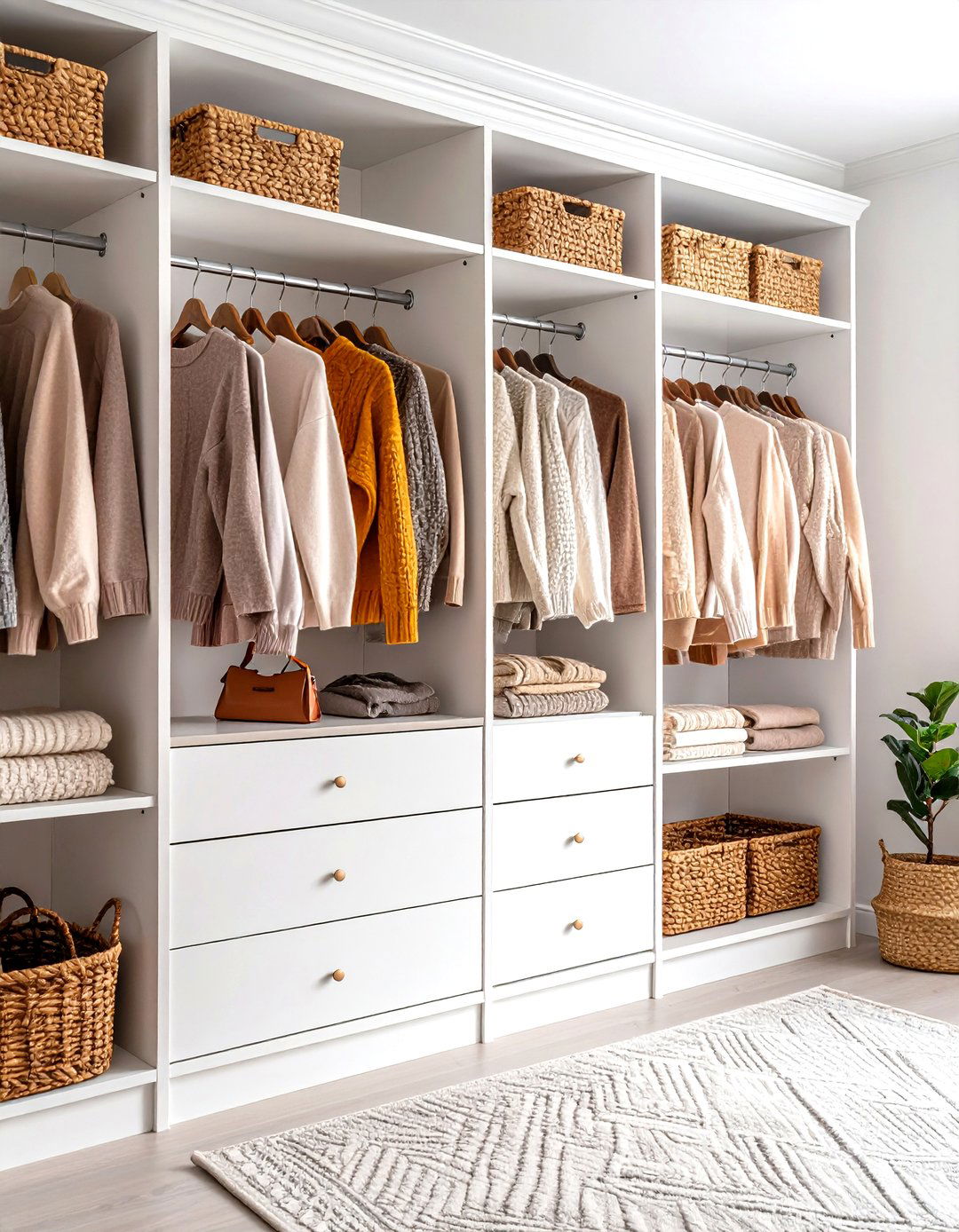
Floor-to-ceiling shelving units harness every inch of wall space, providing room for stacked sweaters, handbags, and decorative baskets. By extending storage up to the ceiling, you minimize wasted space and create a streamlined, boutique-like feel. Add crown molding or trim at the top to seamlessly cap off the shelves and conceal less-used items in upper cubbies. Incorporating adjustable shelving allows you to reconfigure the layout as your wardrobe evolves, making this solution both stylish and future-proof.
2. Install LED Strip Lighting
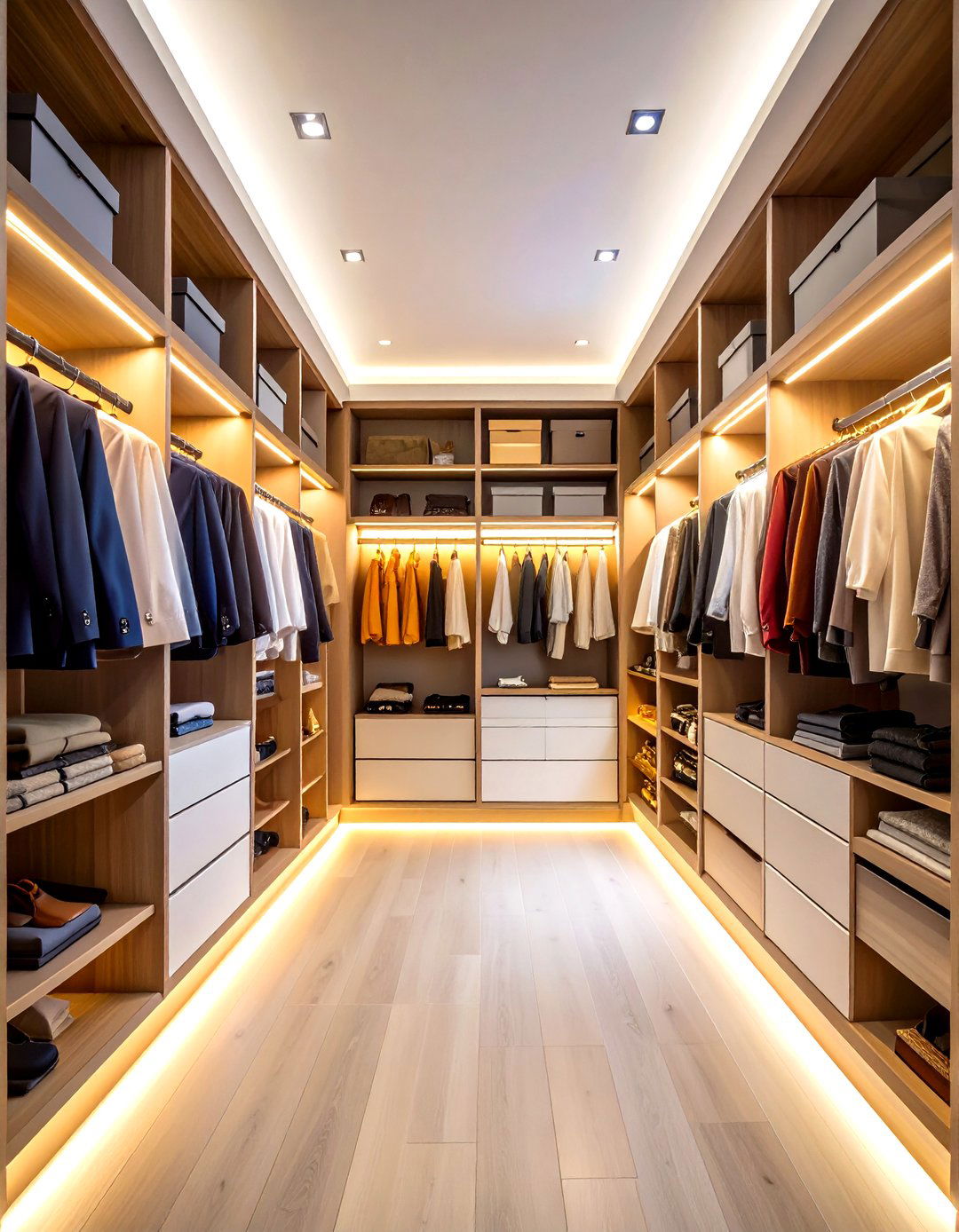
LED strip lights beneath each shelf and inside cabinetry illuminate darker corners, making it easier to locate items at a glance. Tape-style LED fixtures are low-profile and long-lasting, casting minimal heat even when enclosed behind glass doors. Strategic placement along hanging rods or under lip edges highlights purses and shoes, turning storage into a display feature. Dimmable options let you adjust ambiance for morning routines versus nighttime outfit planning.
3. Incorporate a Central Closet Island
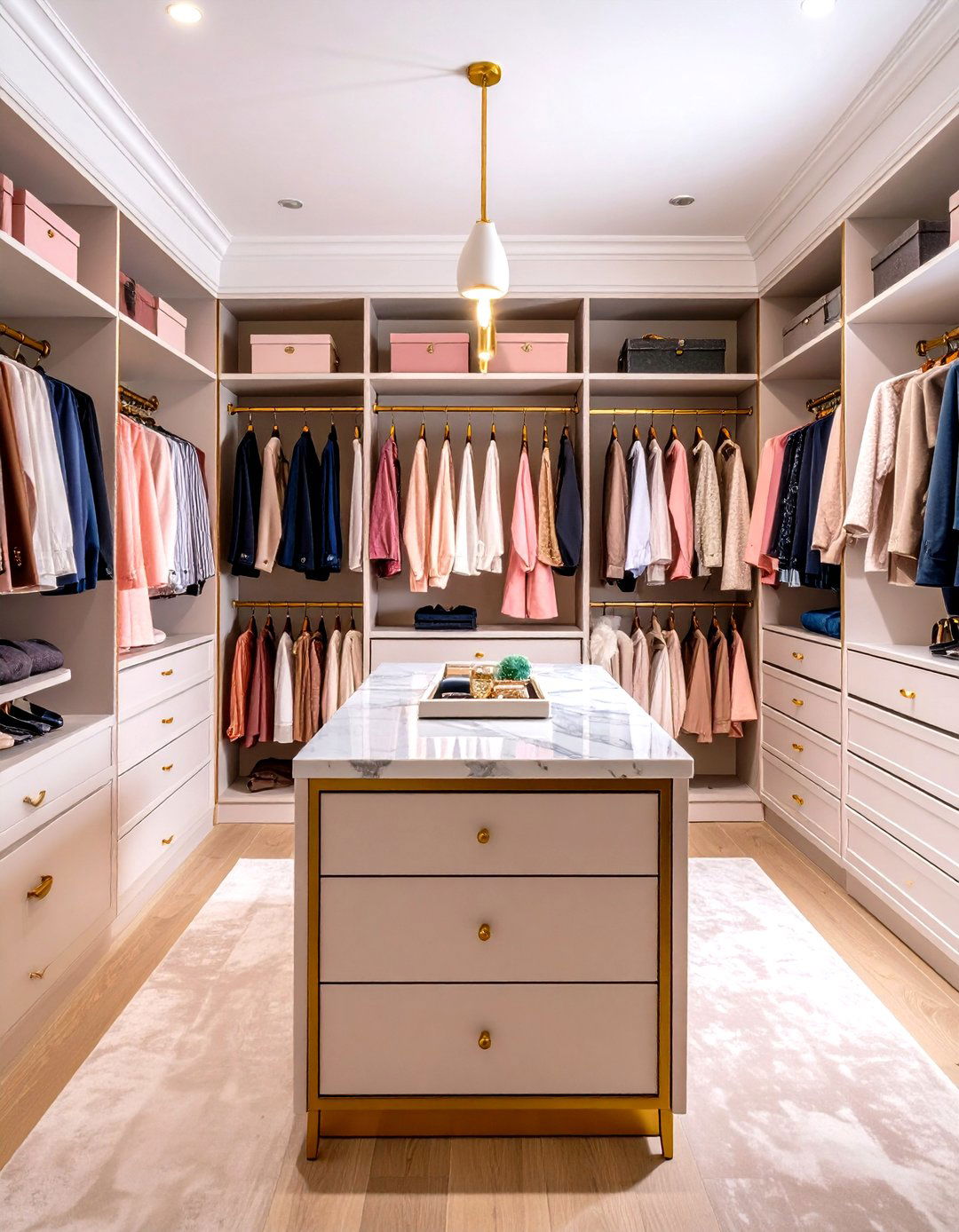
A central island outfitted with drawers, a countertop, and display trays offers additional storage and a staging surface for jewelry, watches, or daily essentials. Choose materials like marble, wood, or lacquer to complement your cabinetry. The island doubles as a folding station and decorative focal point, anchoring the room. Incorporating under-counter cabinets or open cubbies ensures the island remains as functional as it is beautiful.
4. Add Glass or Mirrored Doors
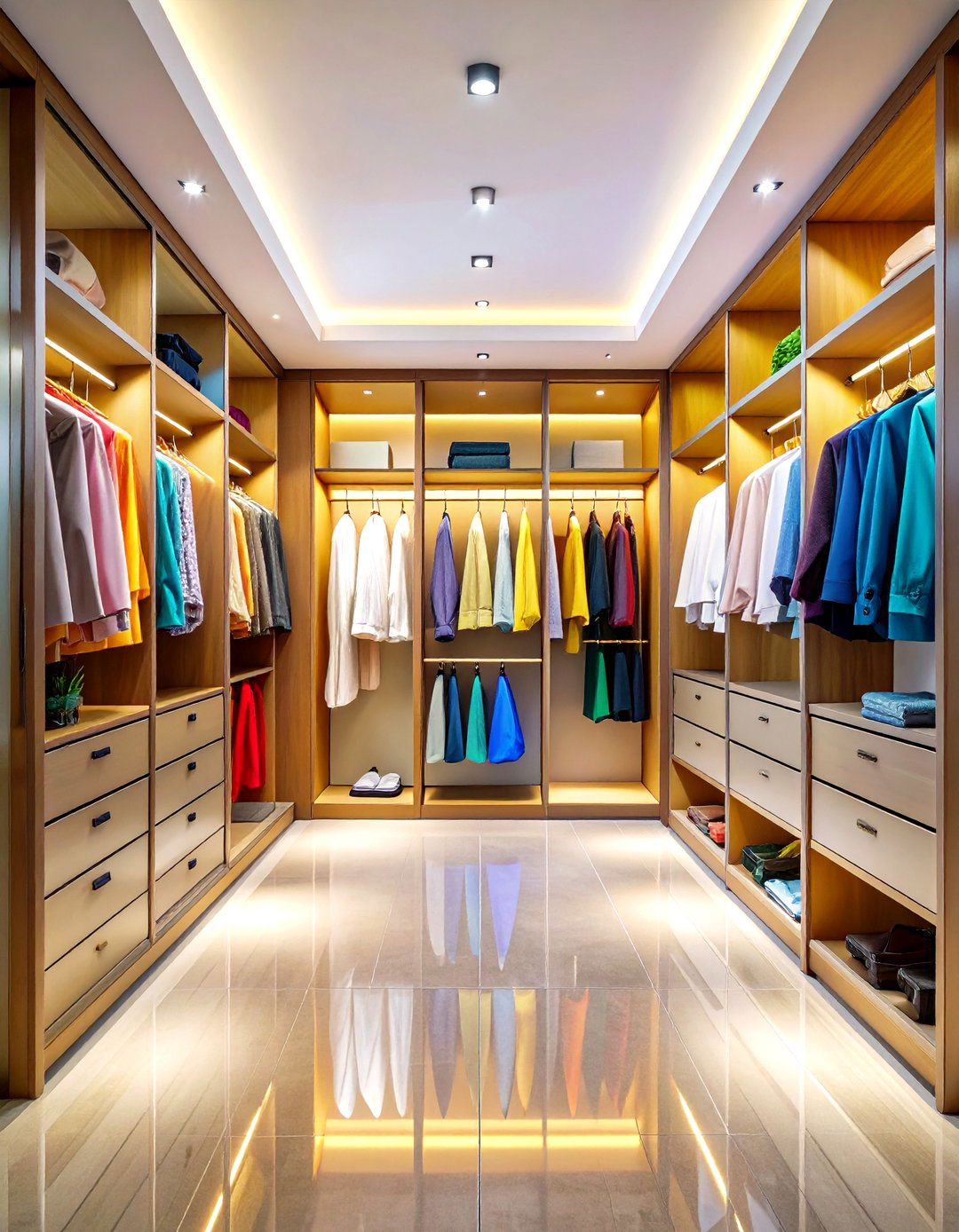
Replacing solid cabinet doors with tempered glass or mirrored panels instantly expands the visual footprint of your closet. Mirrored fronts eliminate the need for a standalone full-length mirror, while glass doors showcase organized contents—encouraging you to maintain tidiness. Frosted or tinted glass offers privacy for less decorative items. Reflective surfaces also bounce light around the space, making even modest closets feel brighter and larger.
5. Use a Color Accent Wall or Wallpaper
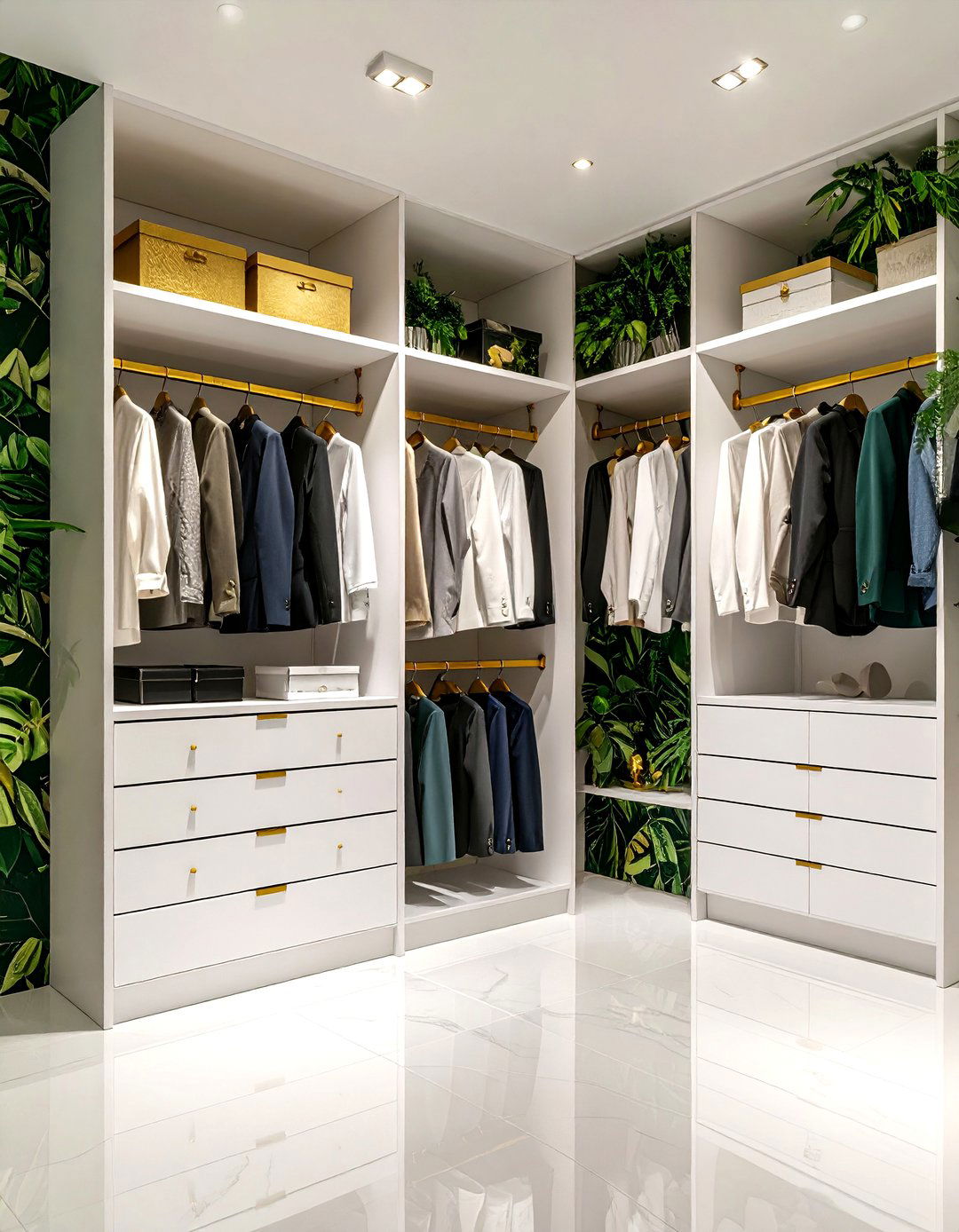
A statement wall behind open shelving or inside a recessed section injects personality and depth. Botanical prints, geometric patterns, or rich jewel tones create a striking backdrop for clothing and accessories. Wallpapered interiors feel bespoke, while removable wallpaper options cater to renters or those seeking seasonal updates. Coordinate paint or wallpaper colors with hardware finishes for a cohesive look.
6. Integrate an Accessory Station
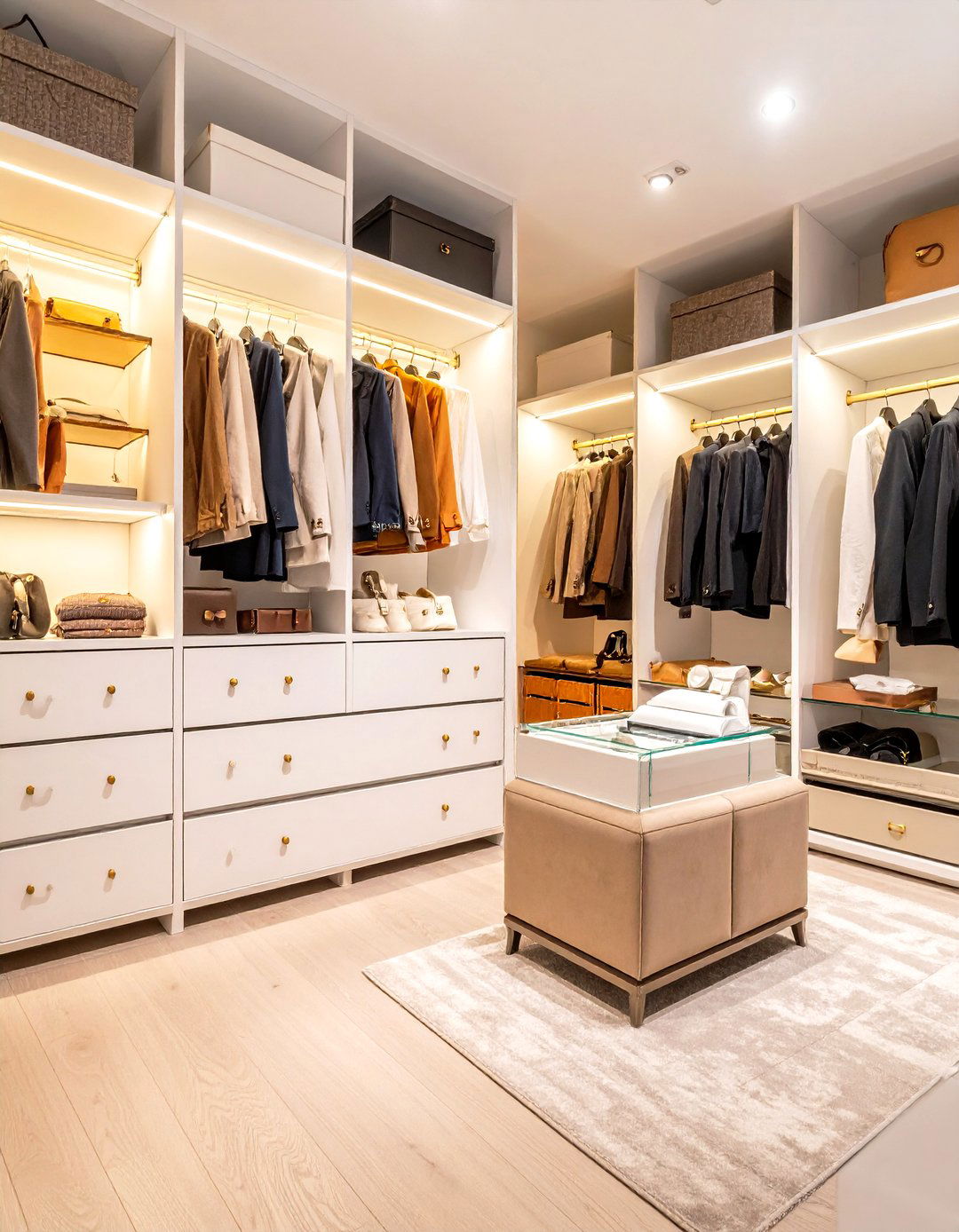
Designate a zone for jewelry, belts, ties, and scarves using hooks, shallow drawers with velvet inserts, and clear acrylic trays. Specialized compartments keep delicate items from tangling and make morning outfit selection effortless. A built-in valet rod provides a temporary landing spot for outfits in progress. Accessory stations streamline daily routines by ensuring every piece has a designated home.
7. Dedicate Shoe Display Shelving
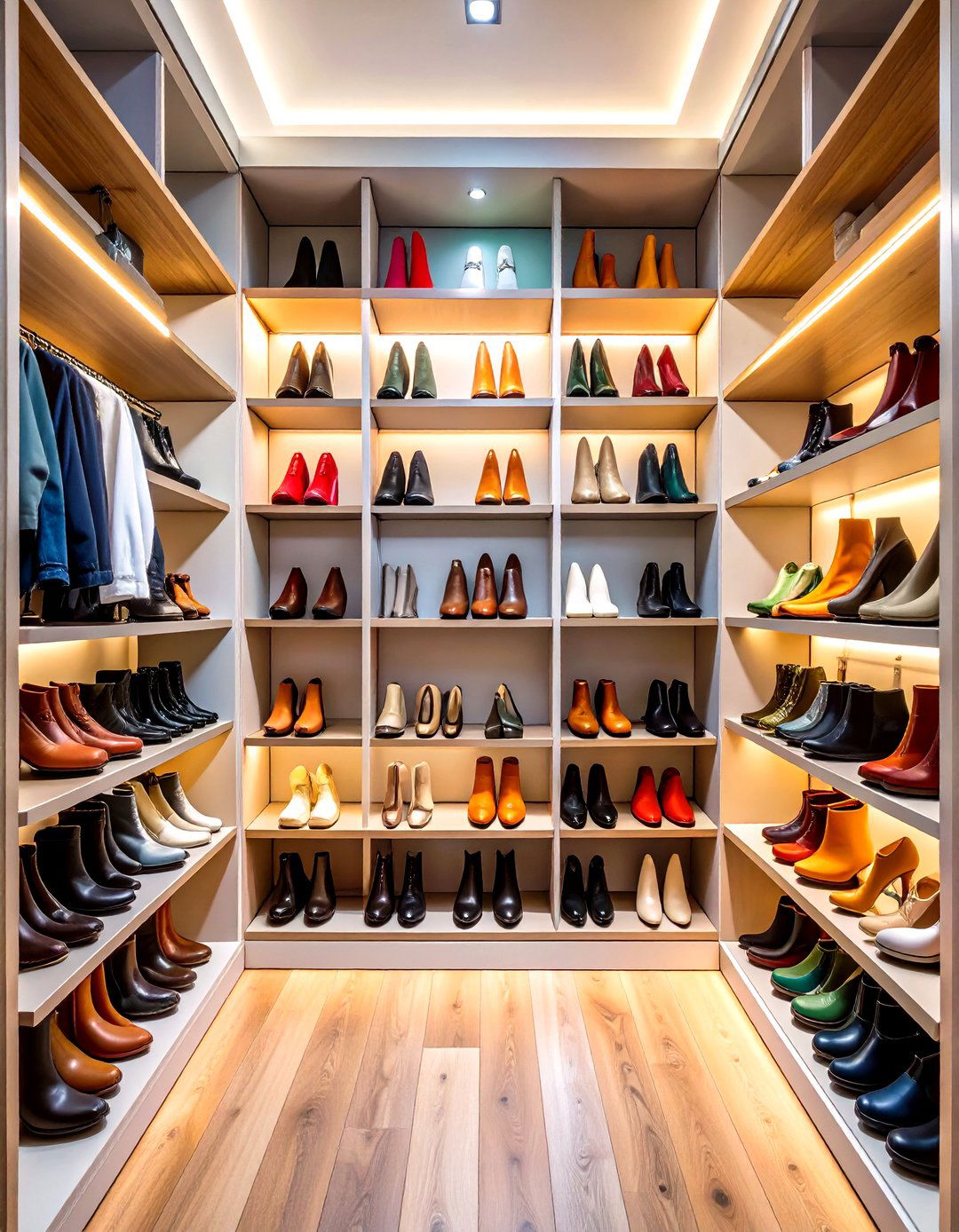
Angled or cubby-style shoe shelves offer optimal visibility and airflow for footwear collections. Acrylic risers elevate heels, while adjustable-height cubbies accommodate boots. Open display encourages you to keep pairs organized and easy to grab, while enclosed drawers below can store off-season or less-frequently worn styles. Integrating lighting within the shoe wall adds a gallery-like effect.
8. Include Built-In Seating or a Bench
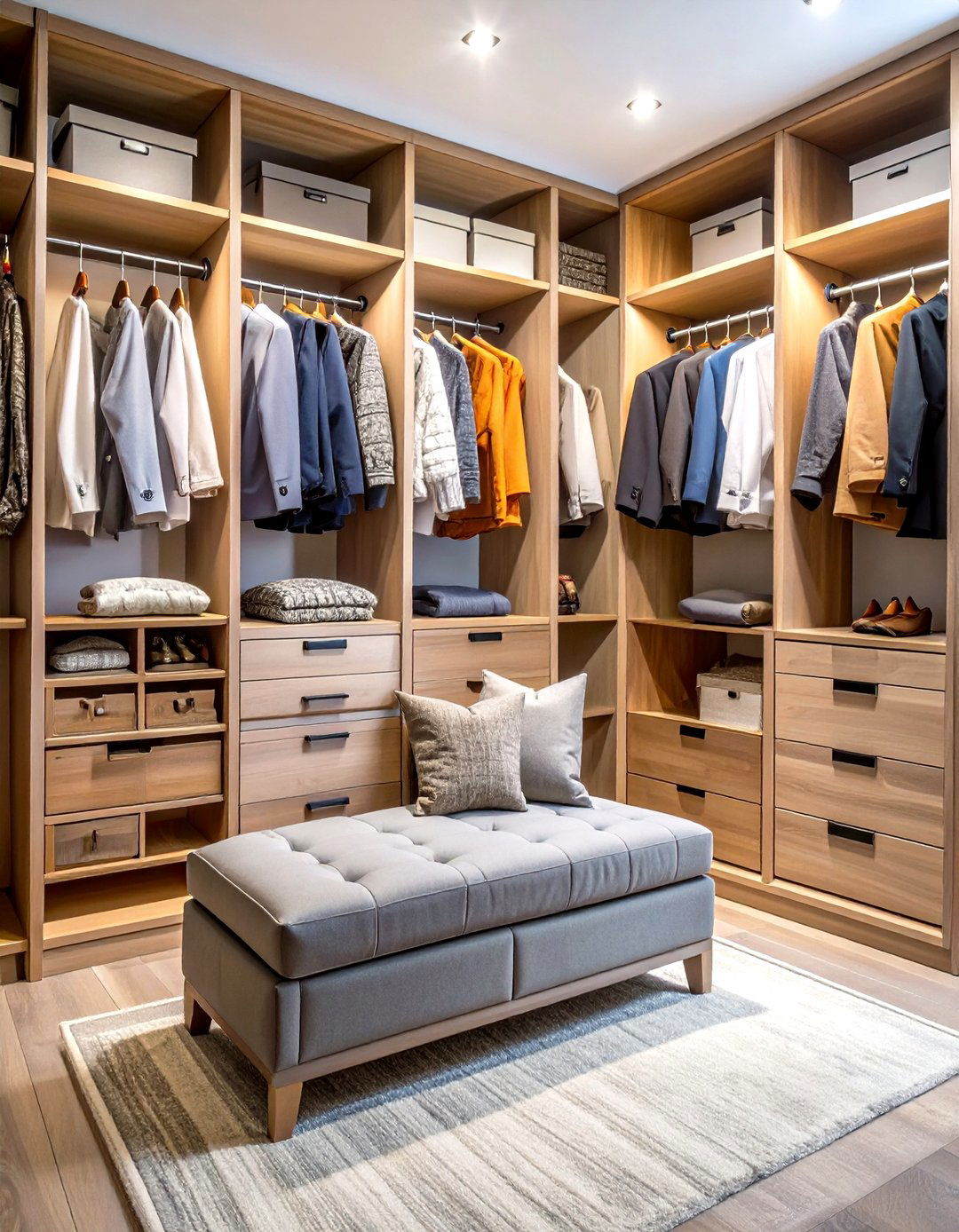
A built-in bench or upholstered ottoman provides a comfortable spot for dressing and shoe-tying. Choose fabrics that complement cabinetry and rugs, or select a sculptural bench for visual contrast. Under-seat storage drawers or open cubbies maximize functionality, storing linens, handbags, or folding baskets out of sight. Seating also breaks up long runs of cabinetry, softening the room’s proportions.
9. Use Open Shelving for Visual Appeal

Open shelves showcase handbags, folded knitwear, and decorative boxes, infusing personality into your closet. By styling shelves sparingly—mixing functional storage with artful vignettes—you maintain order while highlighting favorite pieces. Glass-front boxes protect delicate items from dust without sacrificing display. Changing the organization seasonally keeps your closet feeling fresh and curated.
10. Opt for a Custom Closet System
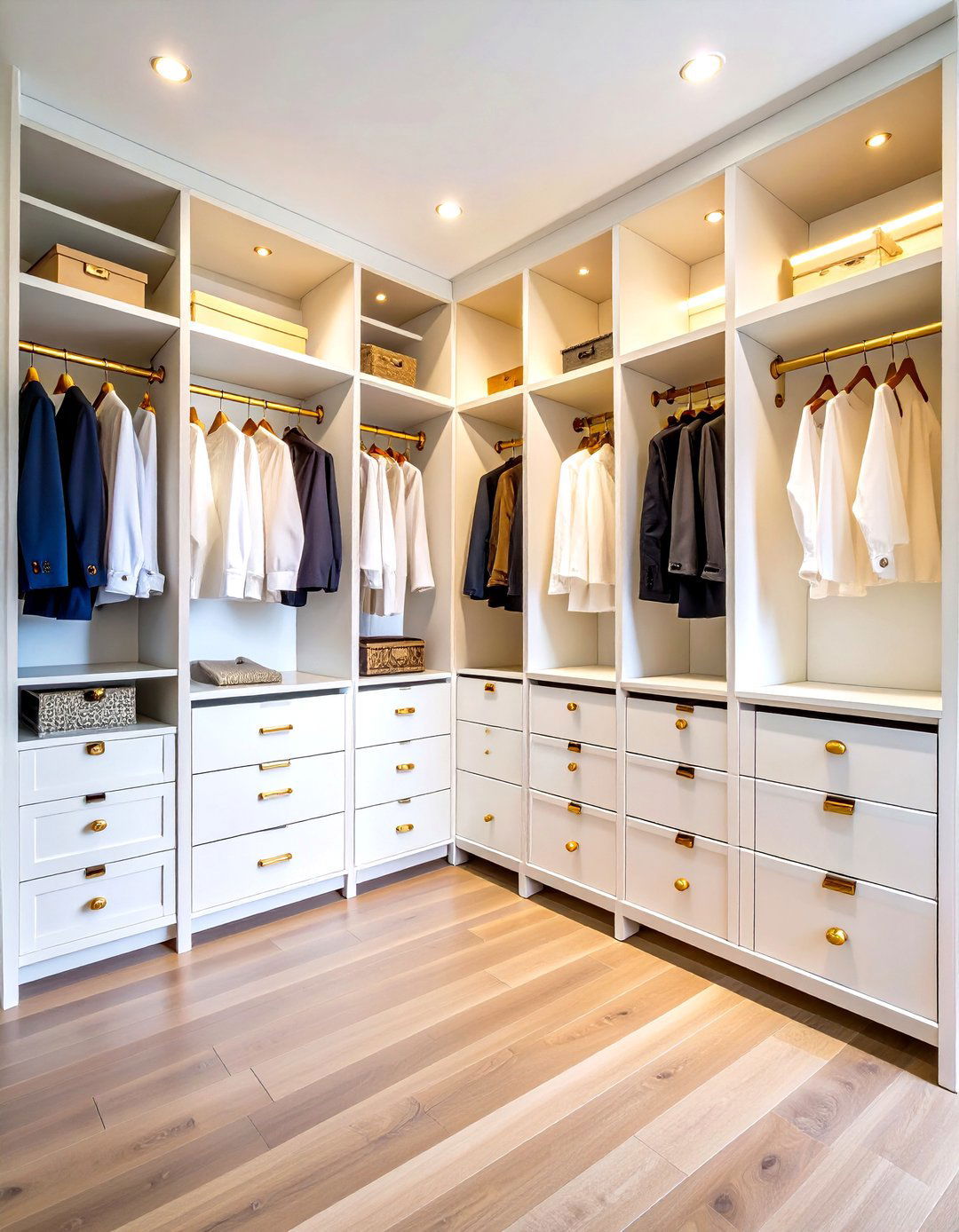
Modular closet systems with a mix of hanging rods, drawers, and adjustable shelves deliver a tailored fit for your space. Select finishes and hardware that echo bedroom furnishings for a cohesive suite. Customization ensures awkward corners and nooks are addressed, maximizing every square foot. Many manufacturers offer lifetime warranties and design support, blending durability with expert planning.
11. Install Sliding Barn or Pocket Doors
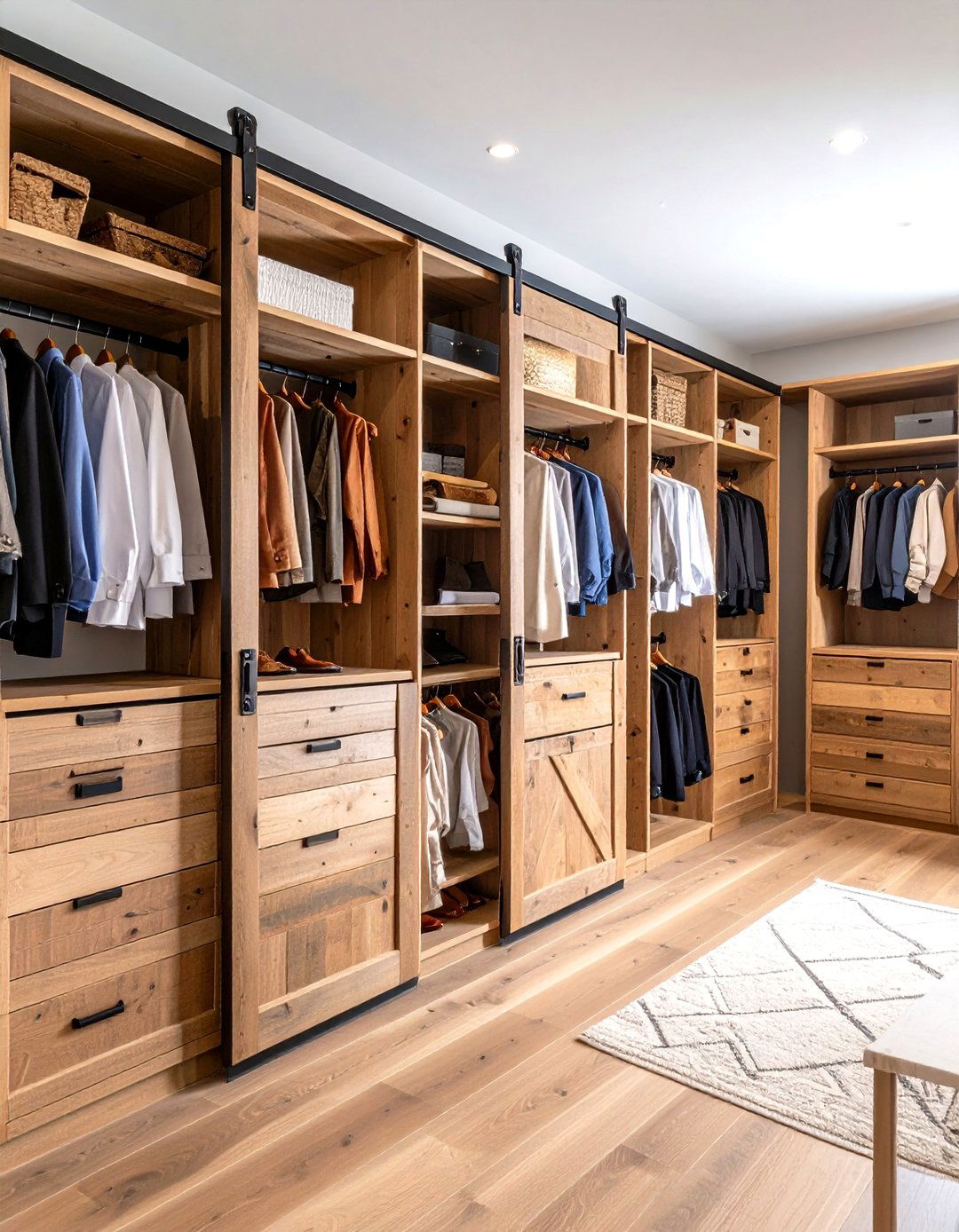
Sliding doors save floor space compared to swinging doors, making them ideal for tight corridors or dressing areas. Barn-style tracks add a rustic or industrial accent, while pocket doors conceal entirely within the wall cavity. Frosted glass or paneled wood options maintain the room’s aesthetic continuity and reduce visual clutter.
12. Feature Decorative Hardware and Pulls
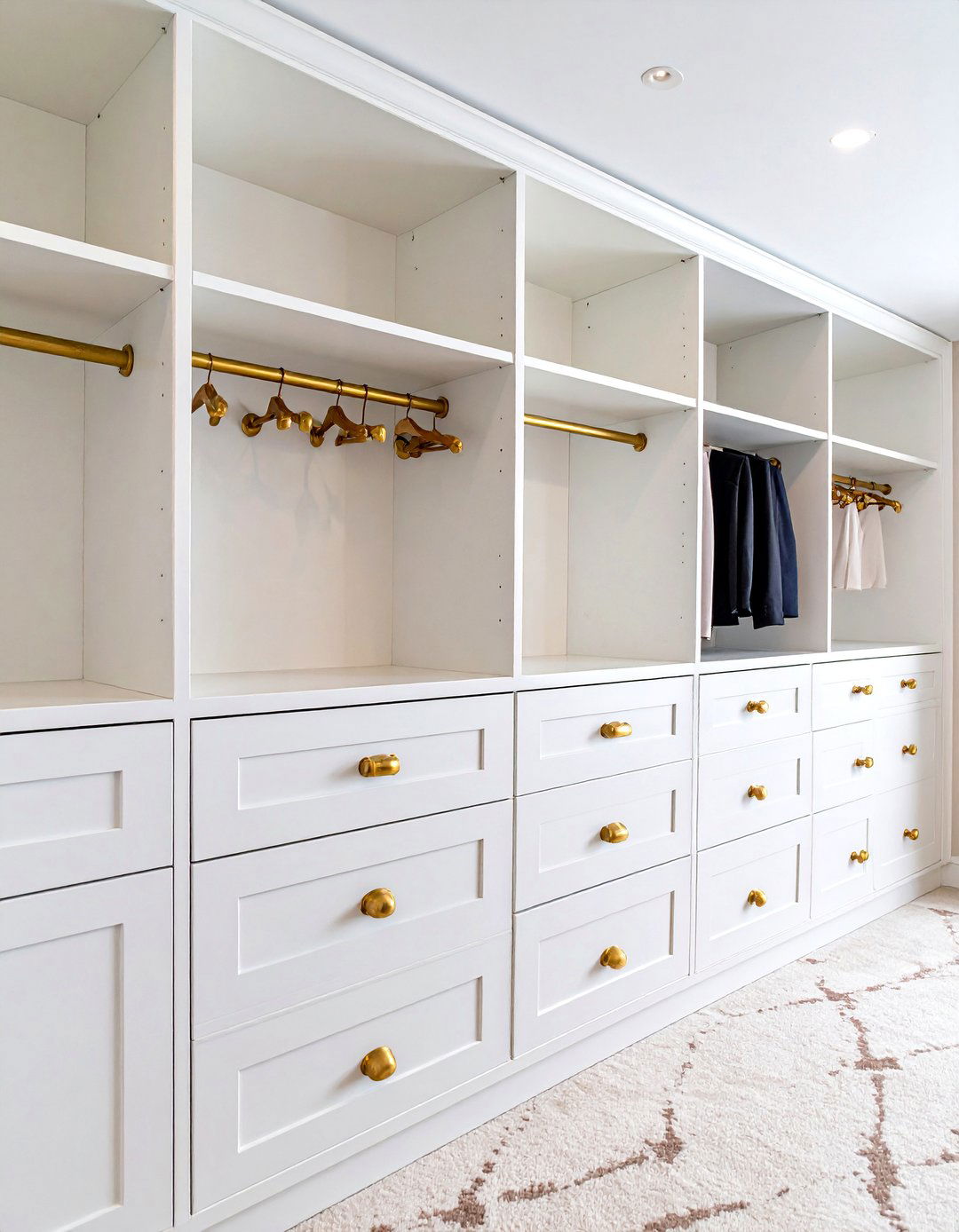
Upgrade standard knobs and handles with sculptural pulls in brass, matte black, or ceramic finishes. Unique hardware turns cabinetry into a design statement, reflecting your personal style. Group styles—cup pulls on drawers and knobs on doors—for visual harmony. Consistent hardware reinforces a polished, boutique-inspired look.
13. Add a Statement Chandelier
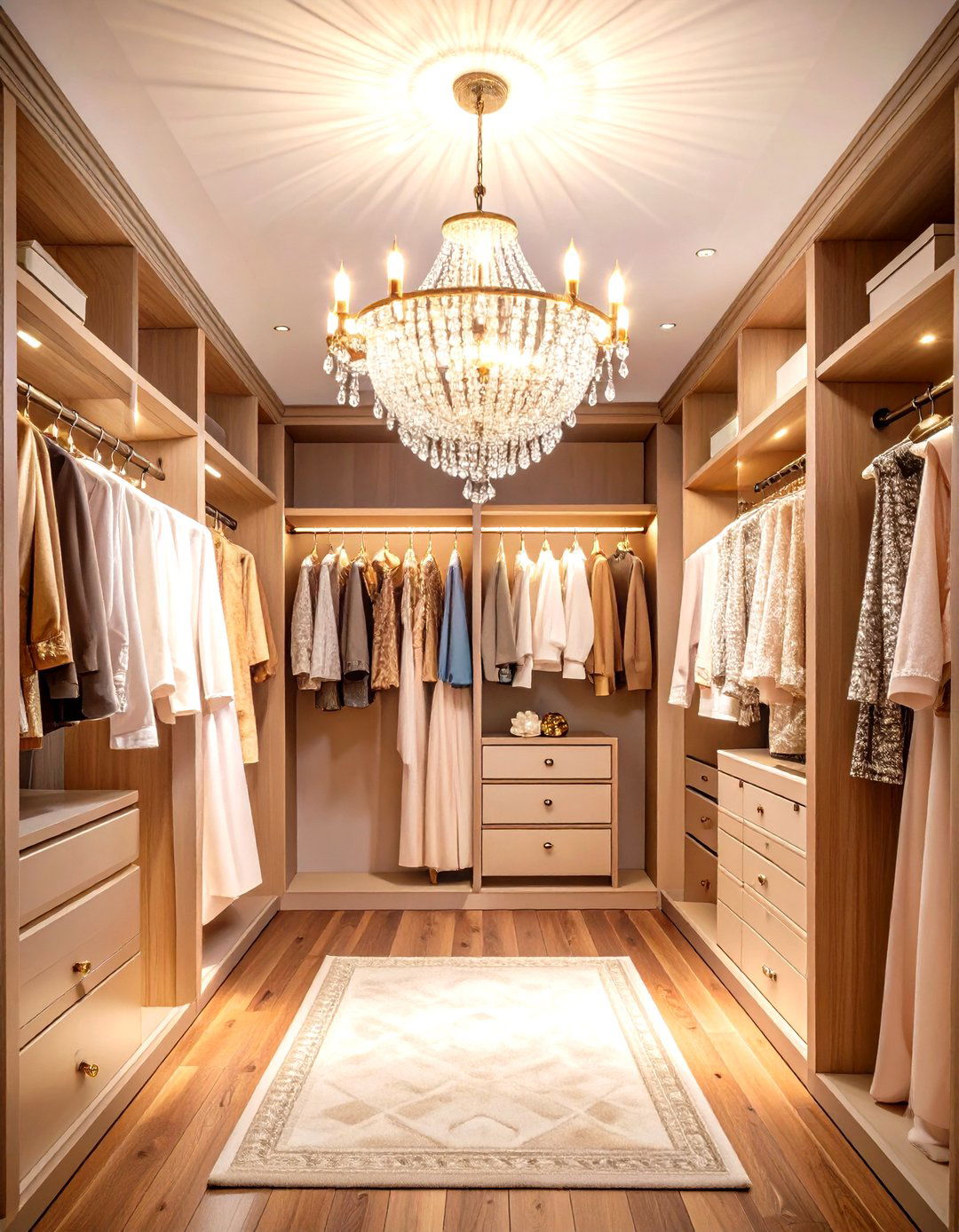
A chandelier—or oversized pendant light—acts as a focal point, elevating the closet from purely utilitarian to glamorous. Crystal, brass, or modern sculptural fixtures infuse luxury. Ensure the fixture is appropriately scaled: not so large as to impede movement, but substantial enough to make an impact. A dimmer switch lets you control mood lighting.
14. Incorporate a Vanity or Makeup Nook
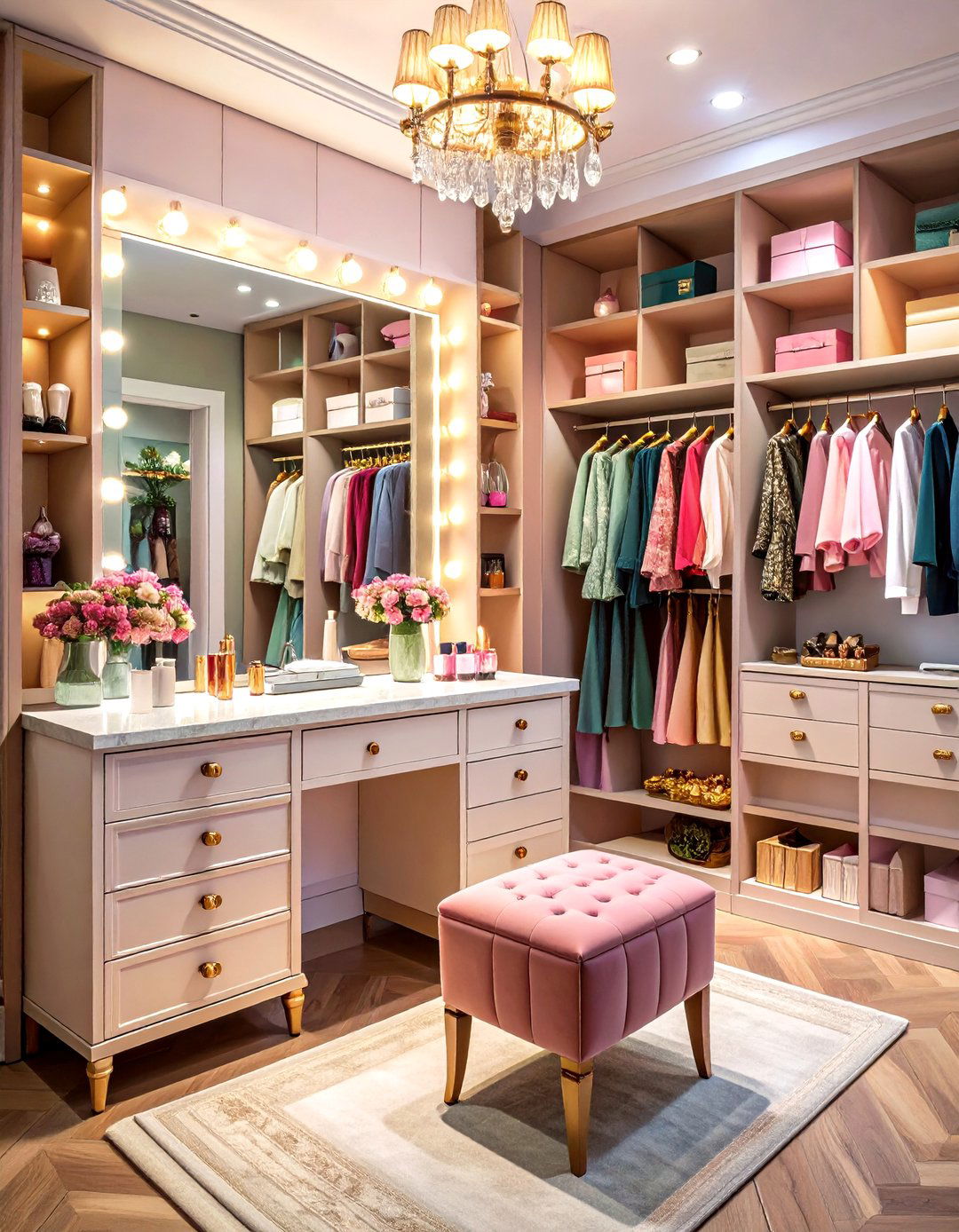
Allocate countertop space with a mirror, task lighting, and storage drawers for cosmetics and accessories. A dedicated vanity within the closet streamlines beauty routines, keeping products organized and accessible. Include a small stool or chair that tucks neatly underneath when not in use.
15. Utilize Modular Cube Storage
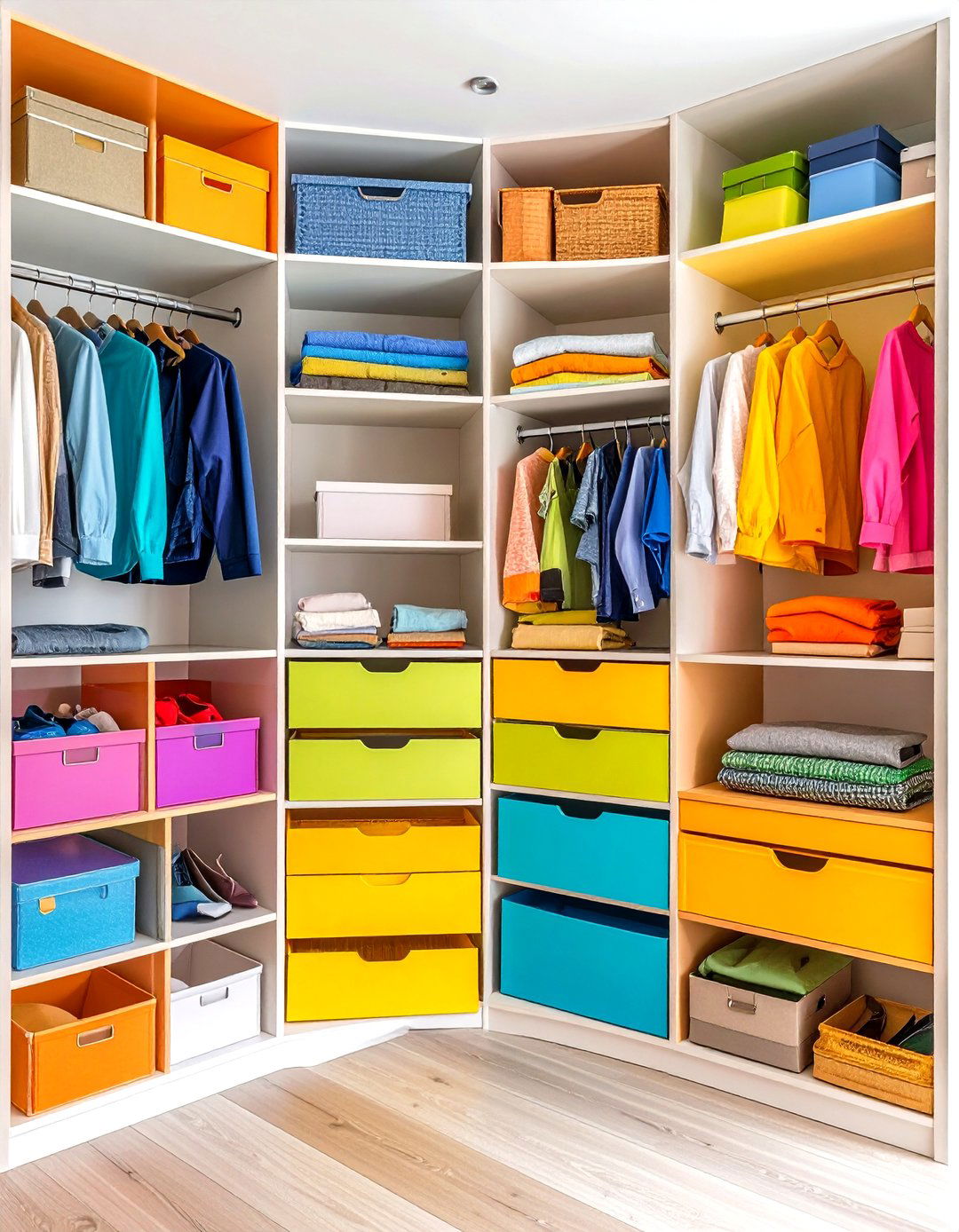
Cube-style units provide flexible spaces for folded items, bins, or display pieces. Mixing open cubes with closed door modules lets you hide clutter while showcasing favorite items. Cubes can be stacked asymmetrically for visual interest or configured into wall-to-wall assemblies.
16. Create a Color-Coordinated Display
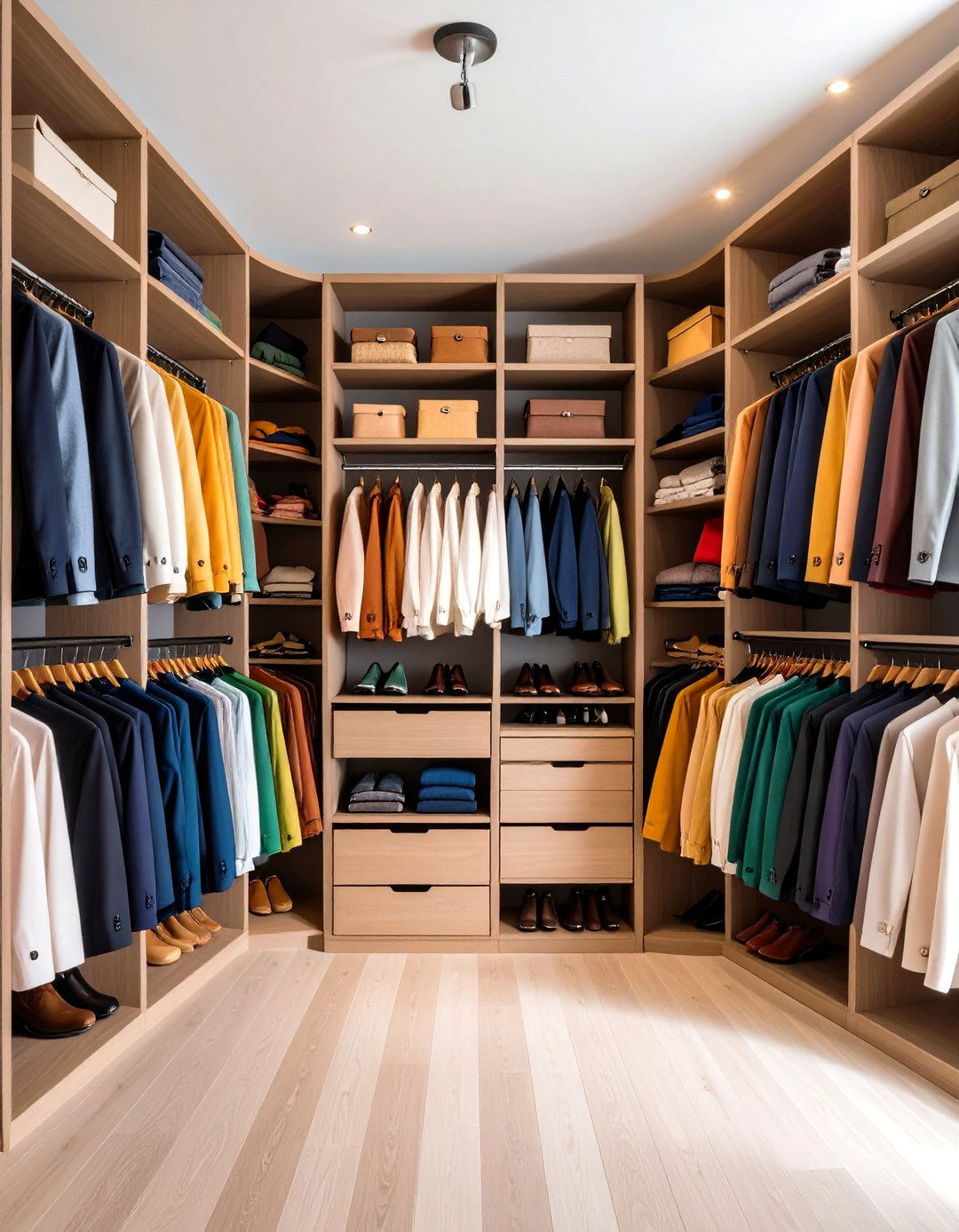
Arrange clothing and accessories by hue to achieve a gallery-like presentation. Color blocking not only looks striking but also streamlines outfit selection. Use gradient sequencing—light to dark—for hanging rods and shelves, reinforcing a visually cohesive environment.
17. Incorporate Under-Shelf Baskets

Slide-in baskets maximize the often overlooked space below shelves, perfect for bulky items like hats, scarves, or workout gear. Wire or wire-framed baskets allow visibility and airflow. Label baskets for seasonal rotation, keeping off-season items neatly stowed yet within reach.
18. Introduce Rustic Wood Elements
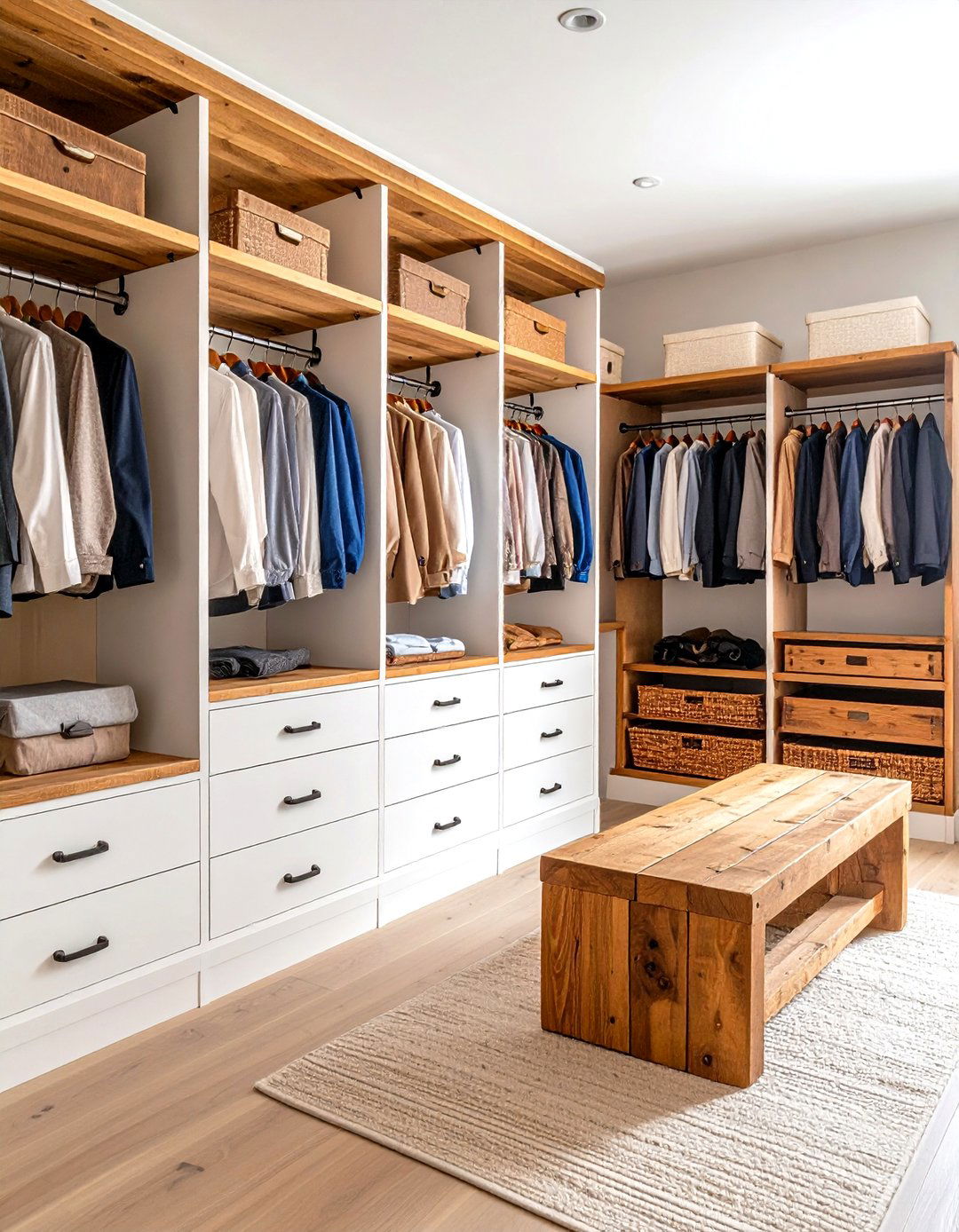
Warm wood accents—whether reclaimed planks for shelving or a barn-wood bench—add texture and character. Pair with metal brackets or iron hardware for an industrial touch. Wood details soften painted cabinetry, creating a cozy, lodge-inspired feel.
19. Add a Feature Rug or Zone Rug

Layer a plush area rug or runner to define the dressing area, adding warmth underfoot and visual interest. Choose low-pile or flatweave options for ease of cleaning. Coordinate rug patterns or hues with wallpaper and cabinetry for a unified palette.
20. Designate a Folding and Prep Zone
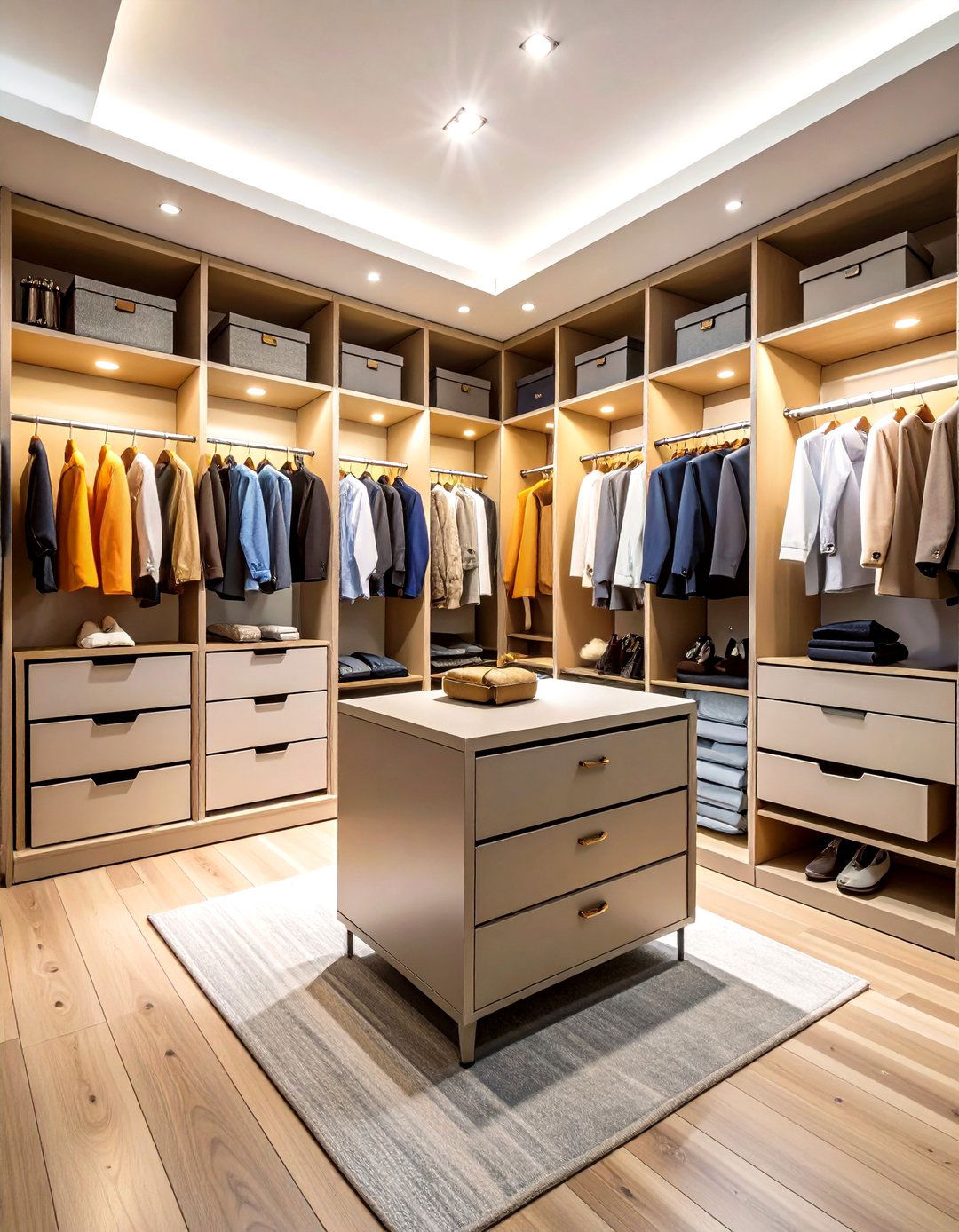
Include a countertop or pull-out shelf for folding clothes, packing suitcases, and organizing laundry. Keeping this zone clear of hanging rods prevents wrinkles and provides a flat surface for daily tasks. Integrate cord management for garment steamers or charging stations.
Conclusion:
By blending thoughtful storage solutions with curated design elements—lighting, hardware, finishes, and decorative accents—you can transform a simple walk-in closet into a personalized dressing retreat. Whether you prioritize maximal organization or a show-stopping aesthetic, these 20 ideas offer adaptable strategies to optimize every inch of your space. Embrace custom cabinetry, clever lighting, and signature touches like statement fixtures to create a closet that’s both practical and delightful. With these concepts, you’ll enjoy a wardrobe haven tailored to your needs and style.


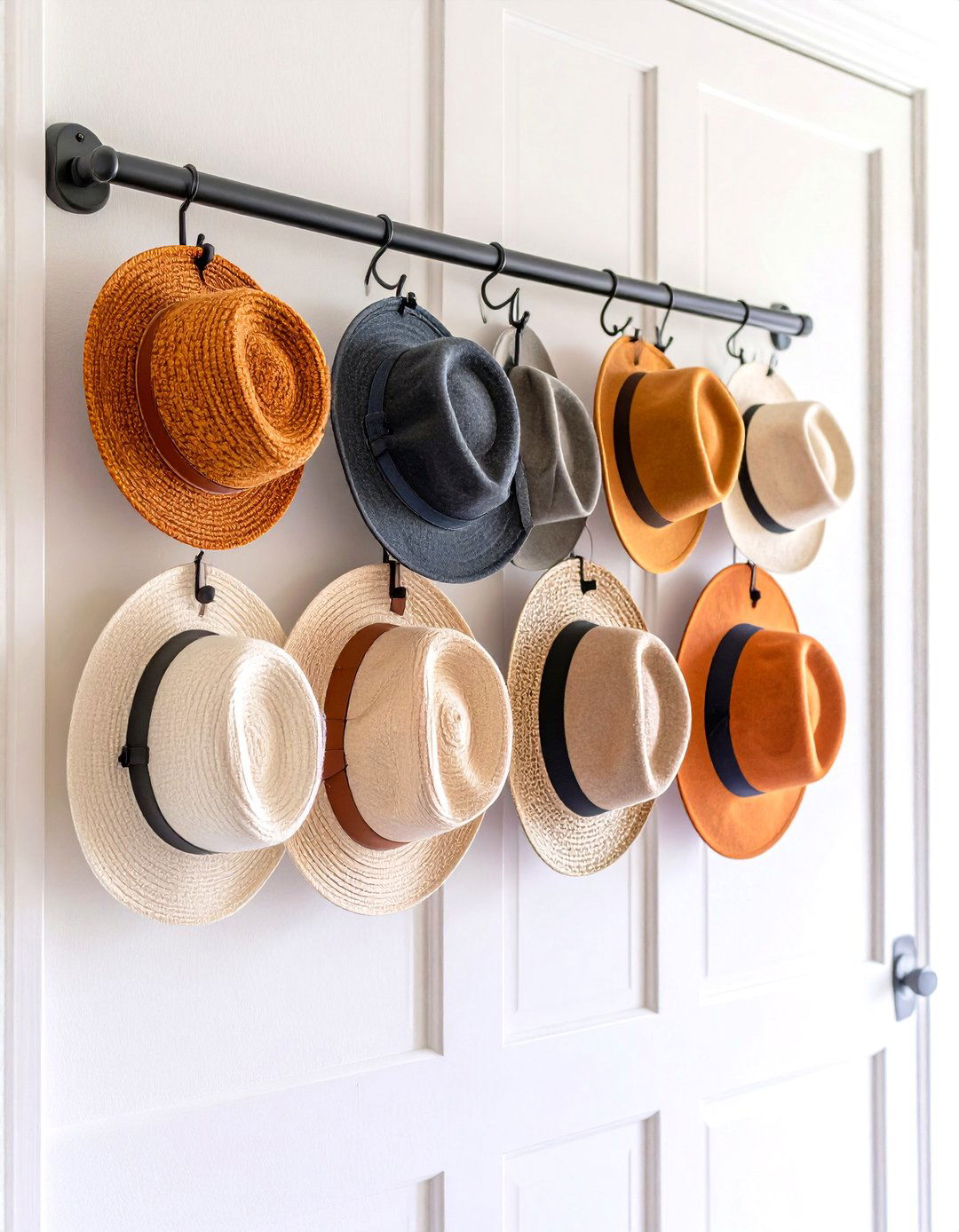
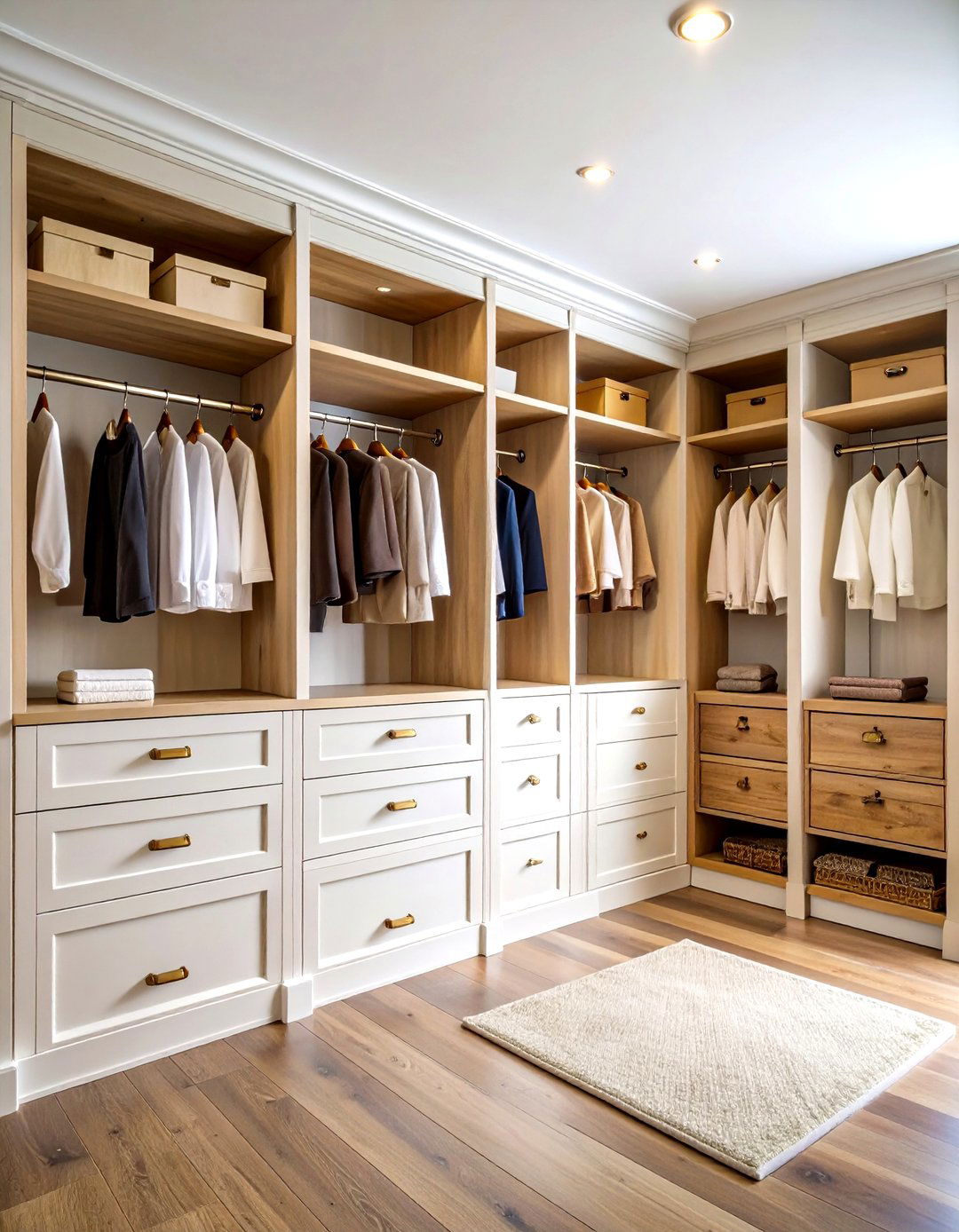
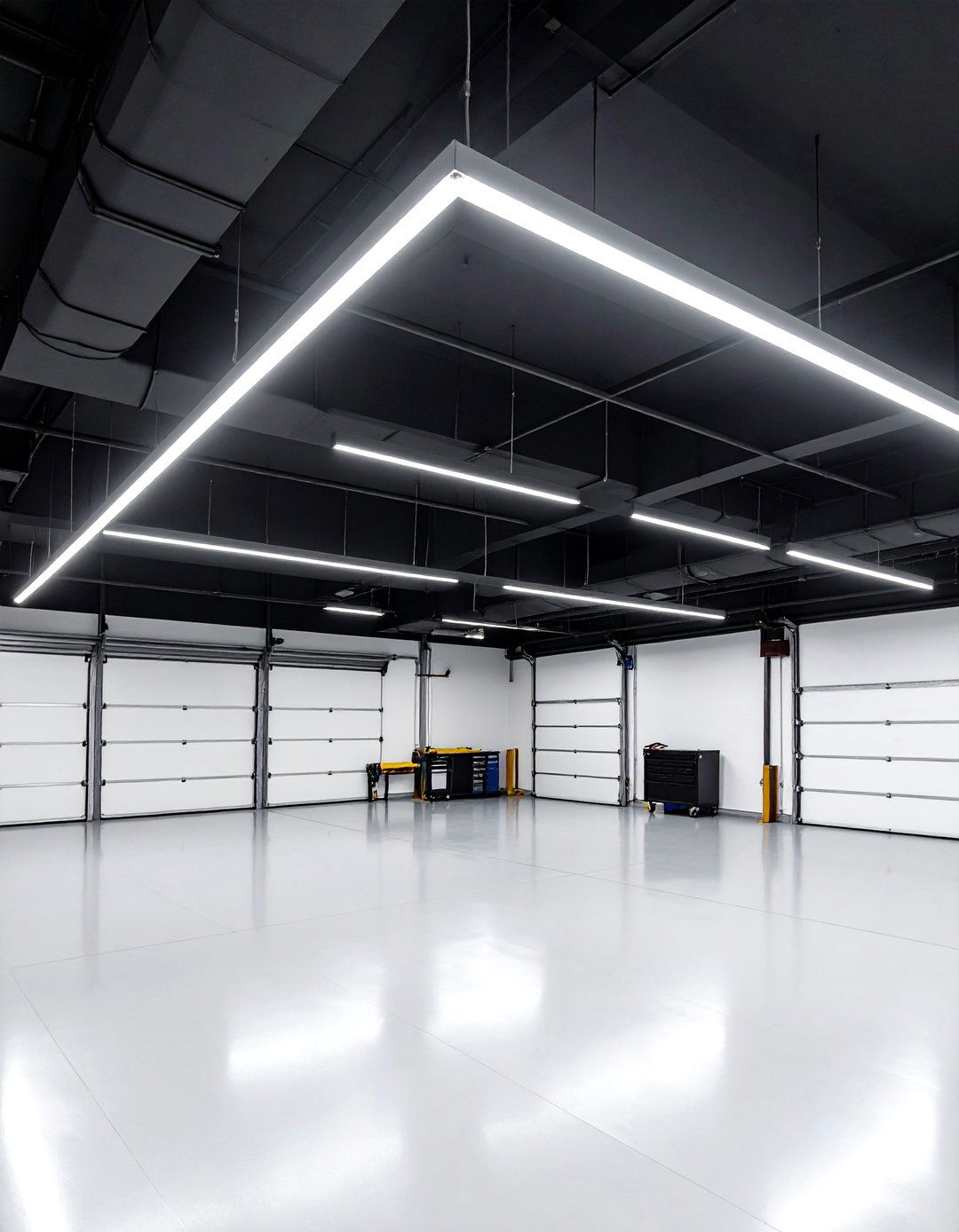
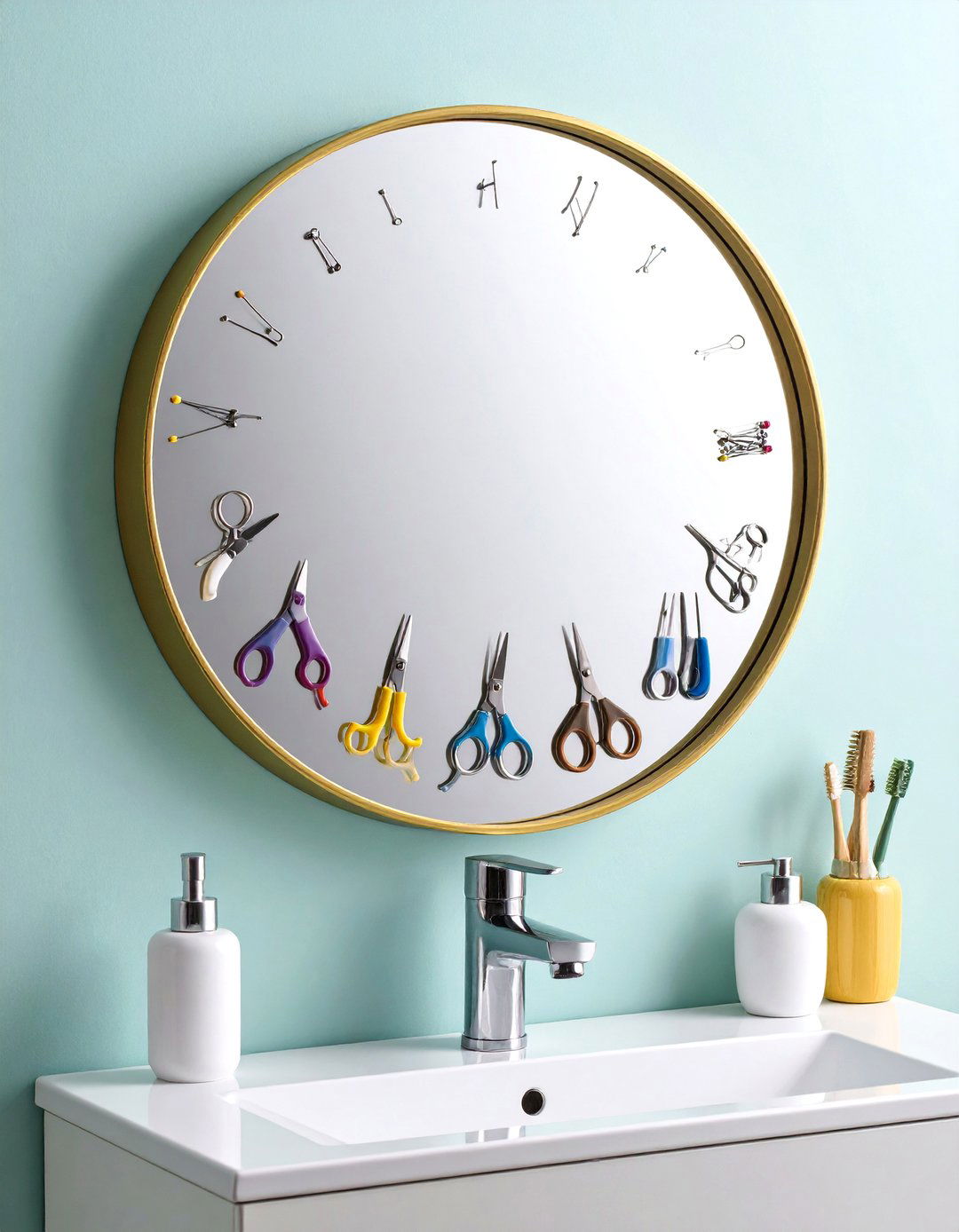
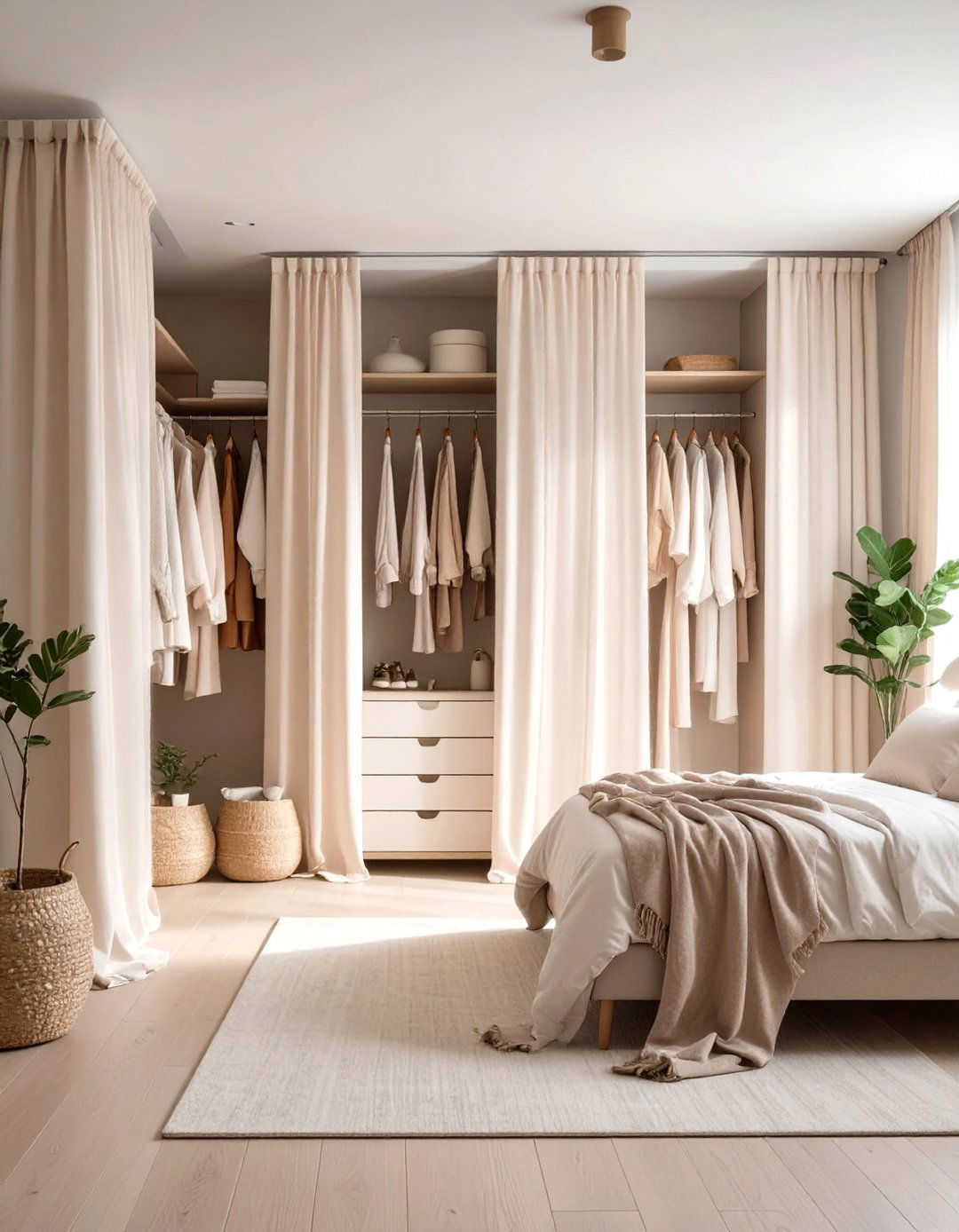
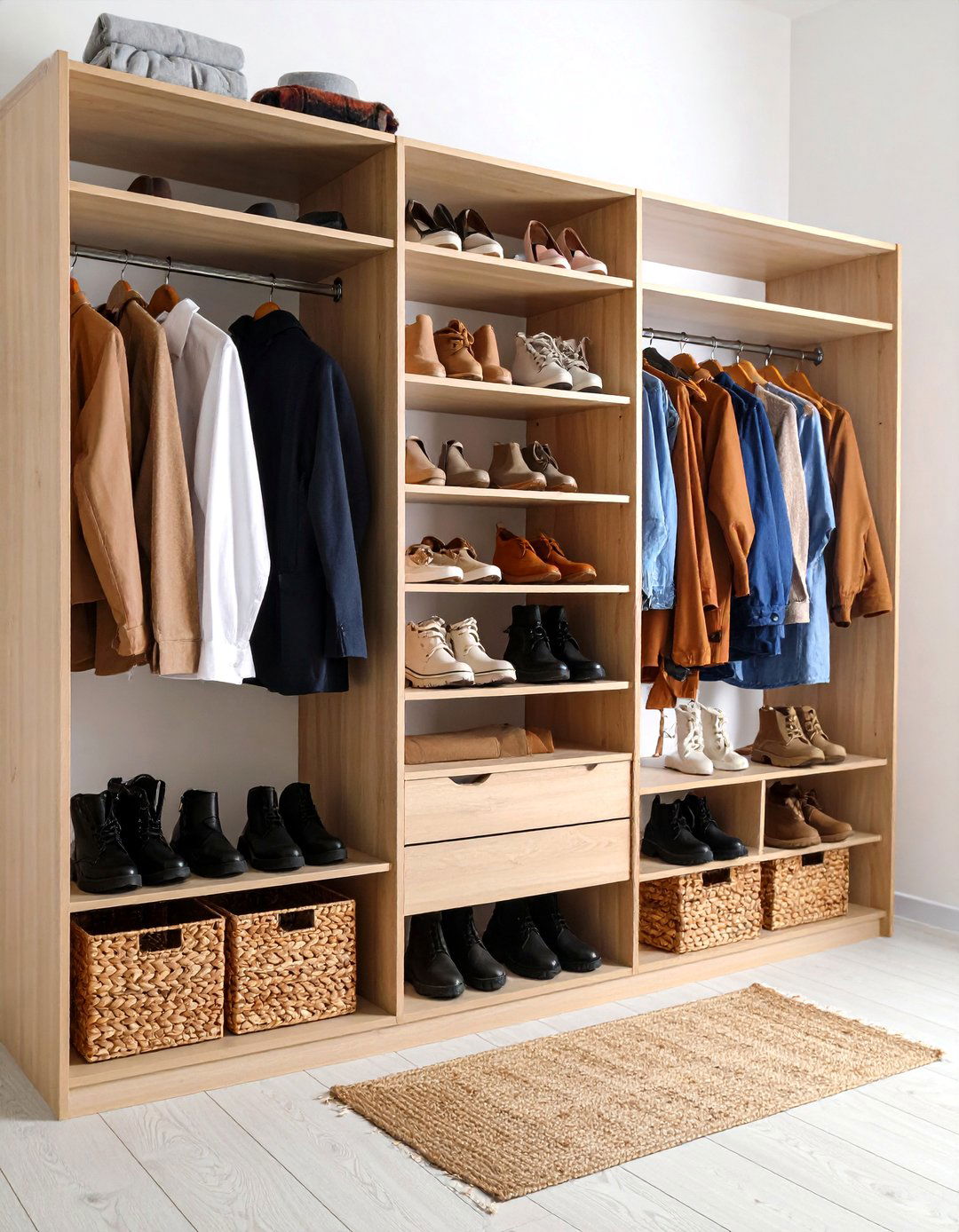
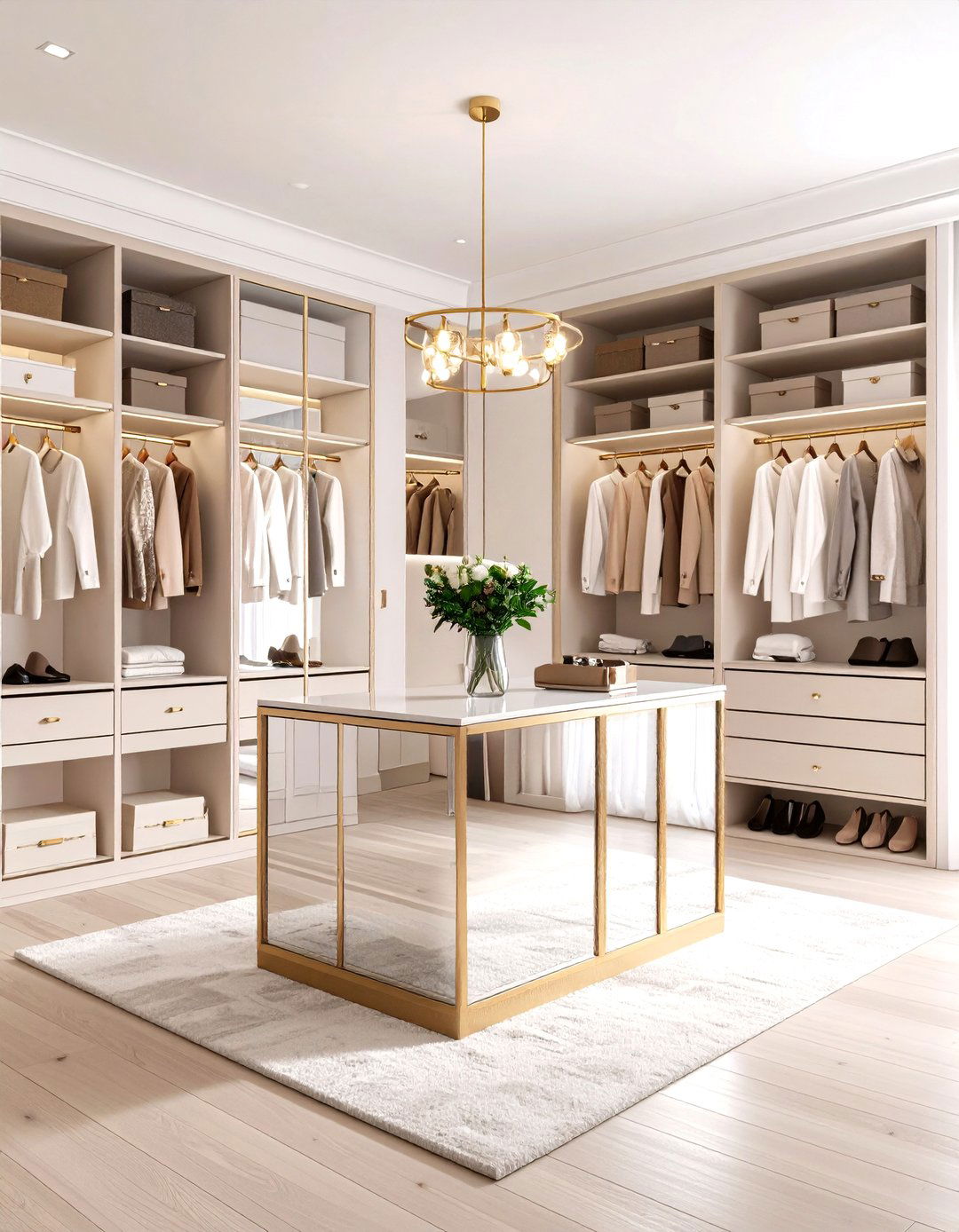
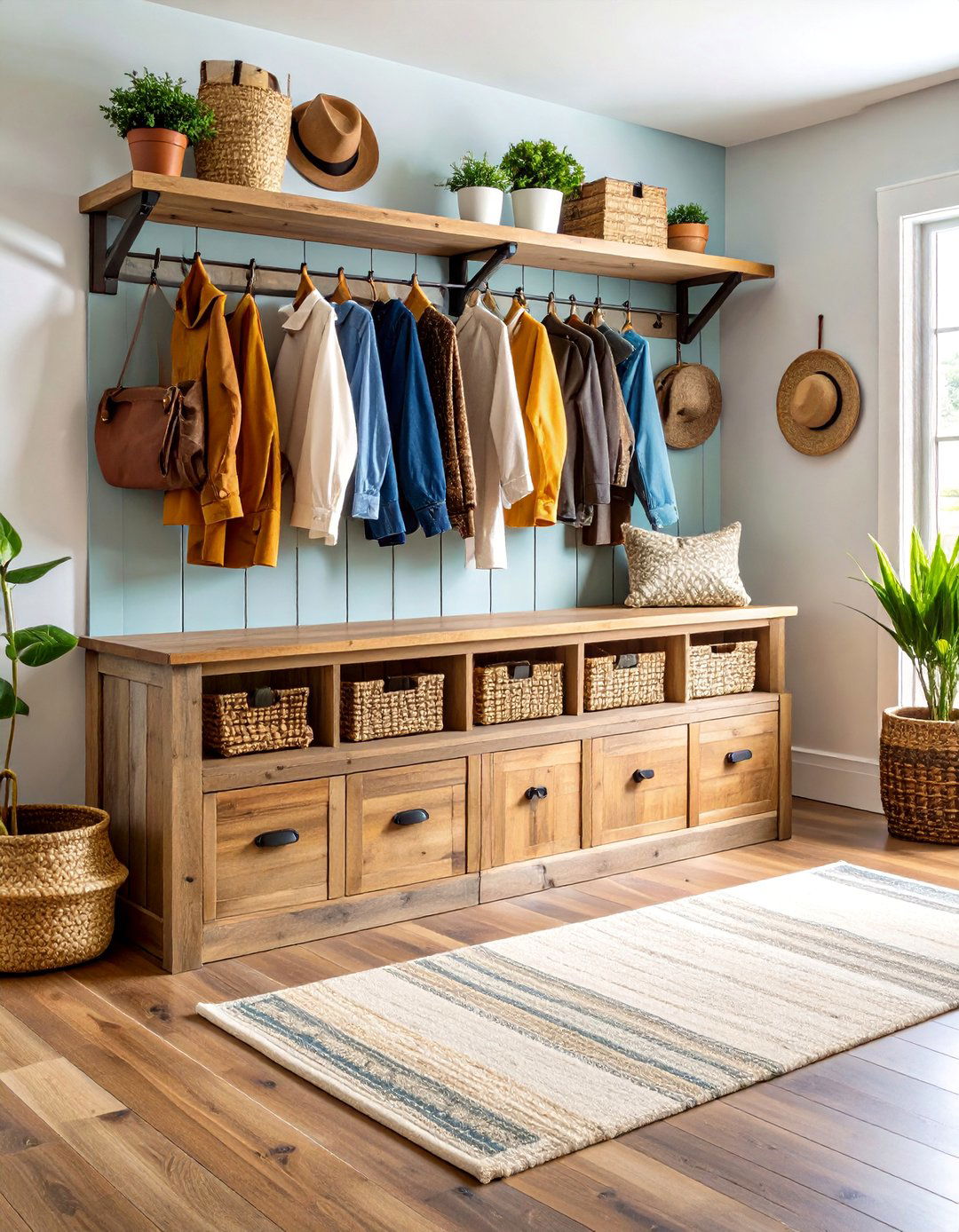
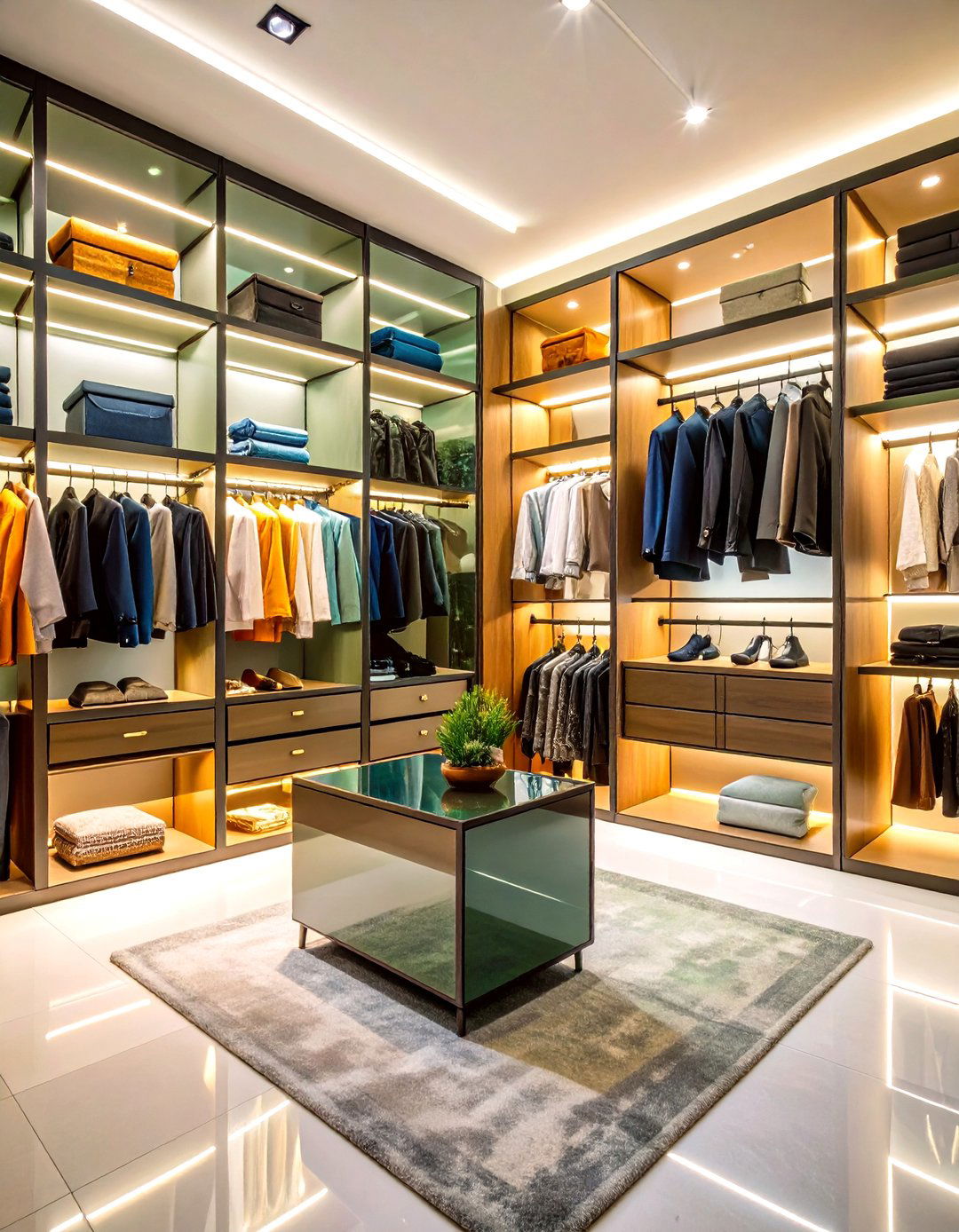
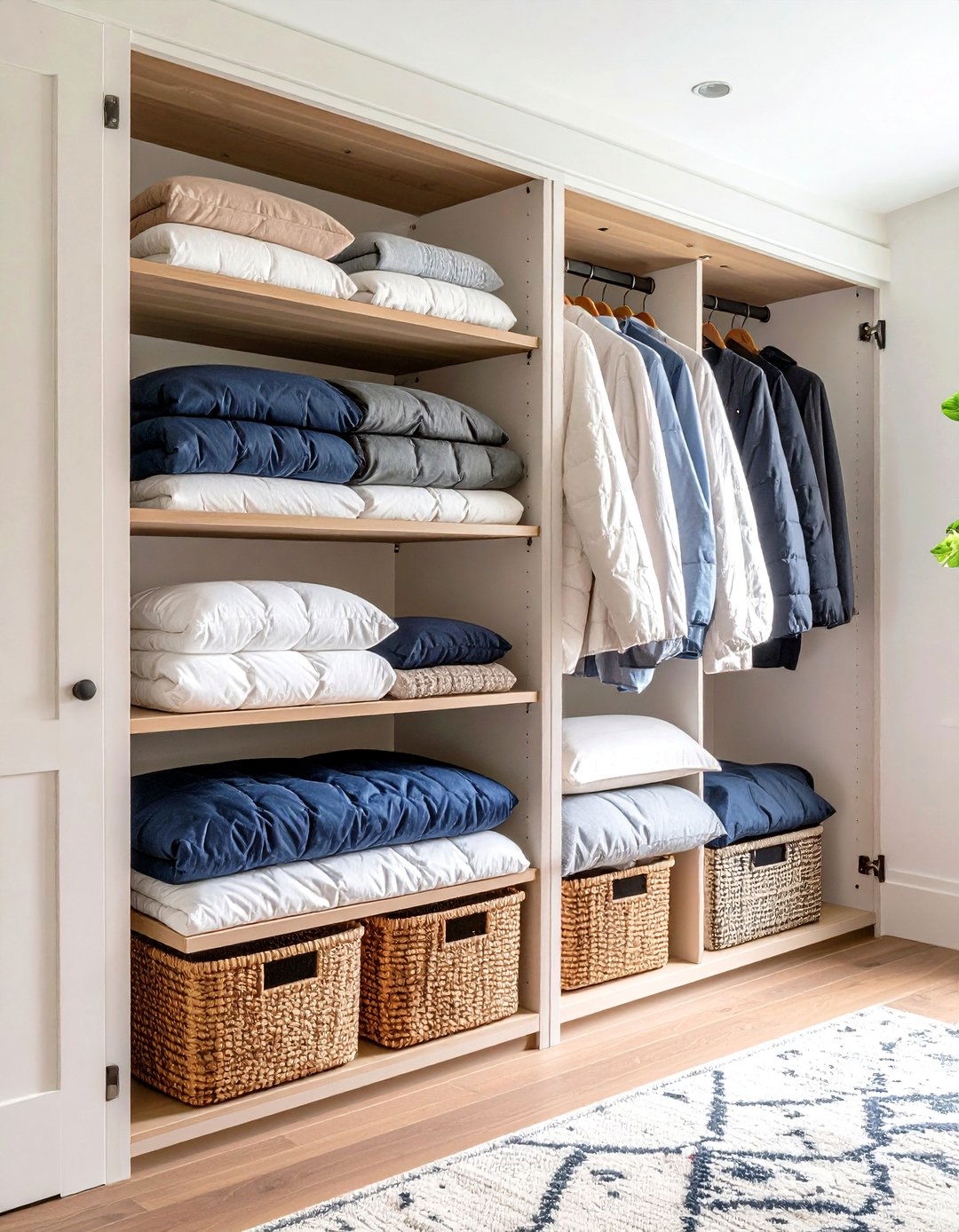

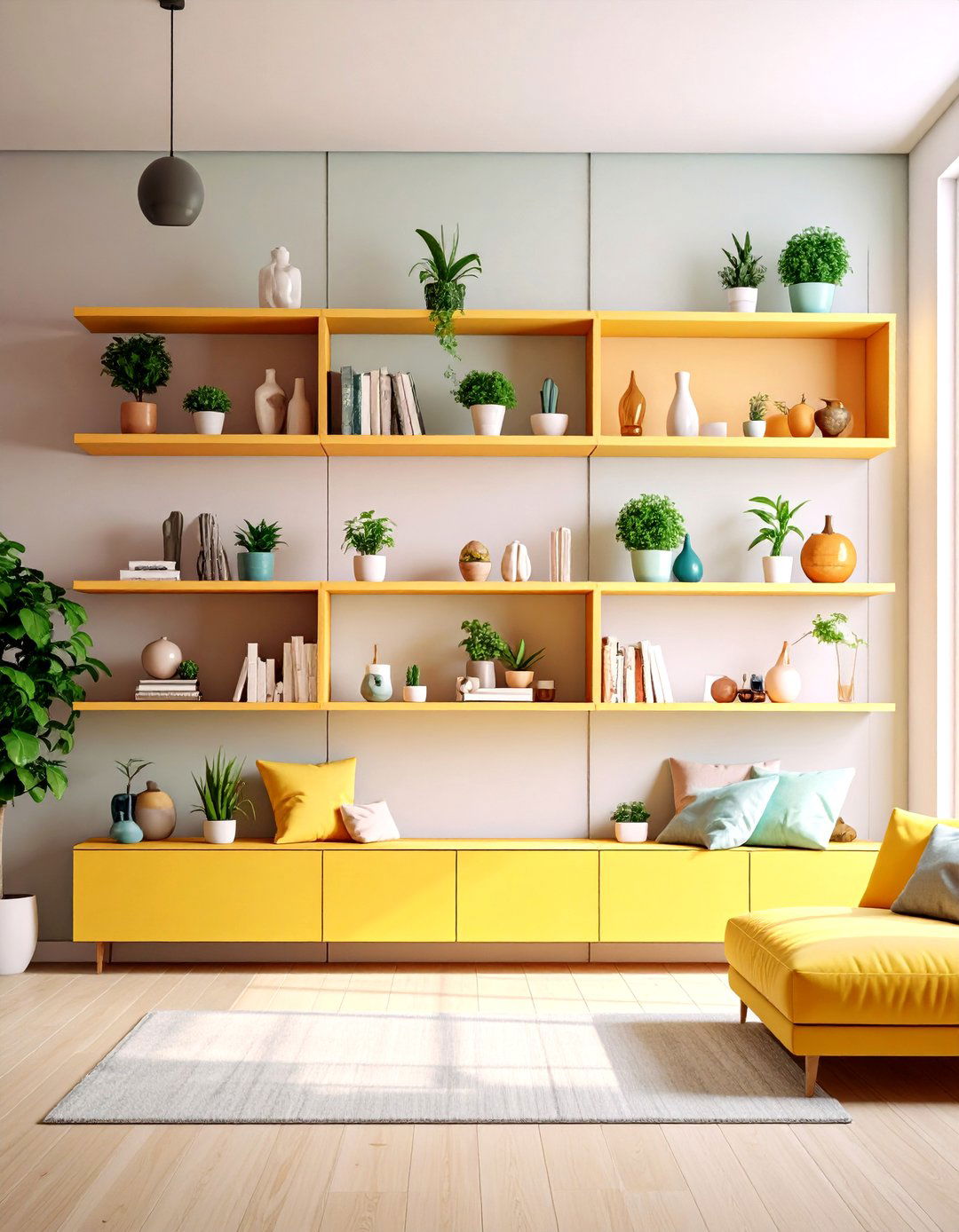
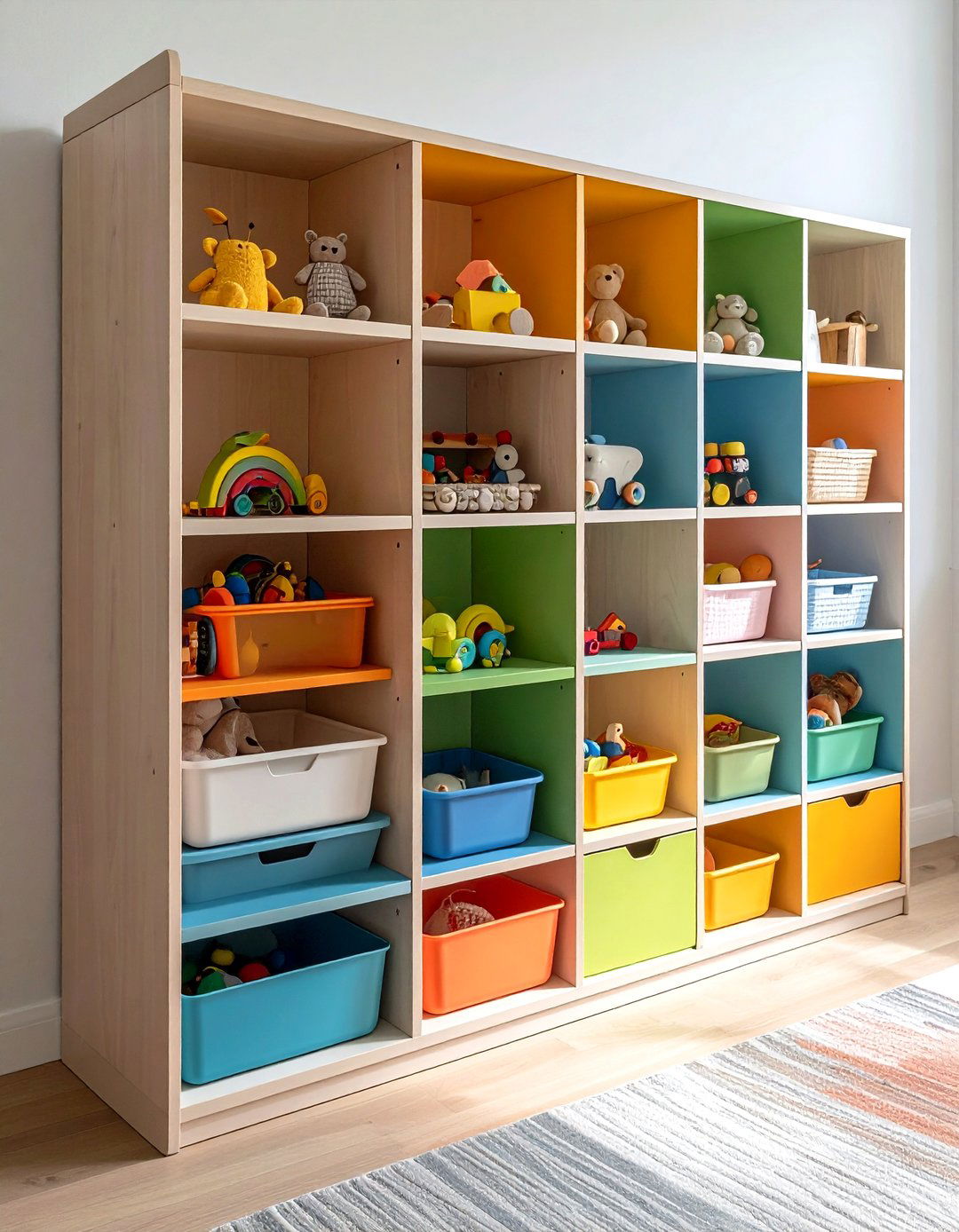
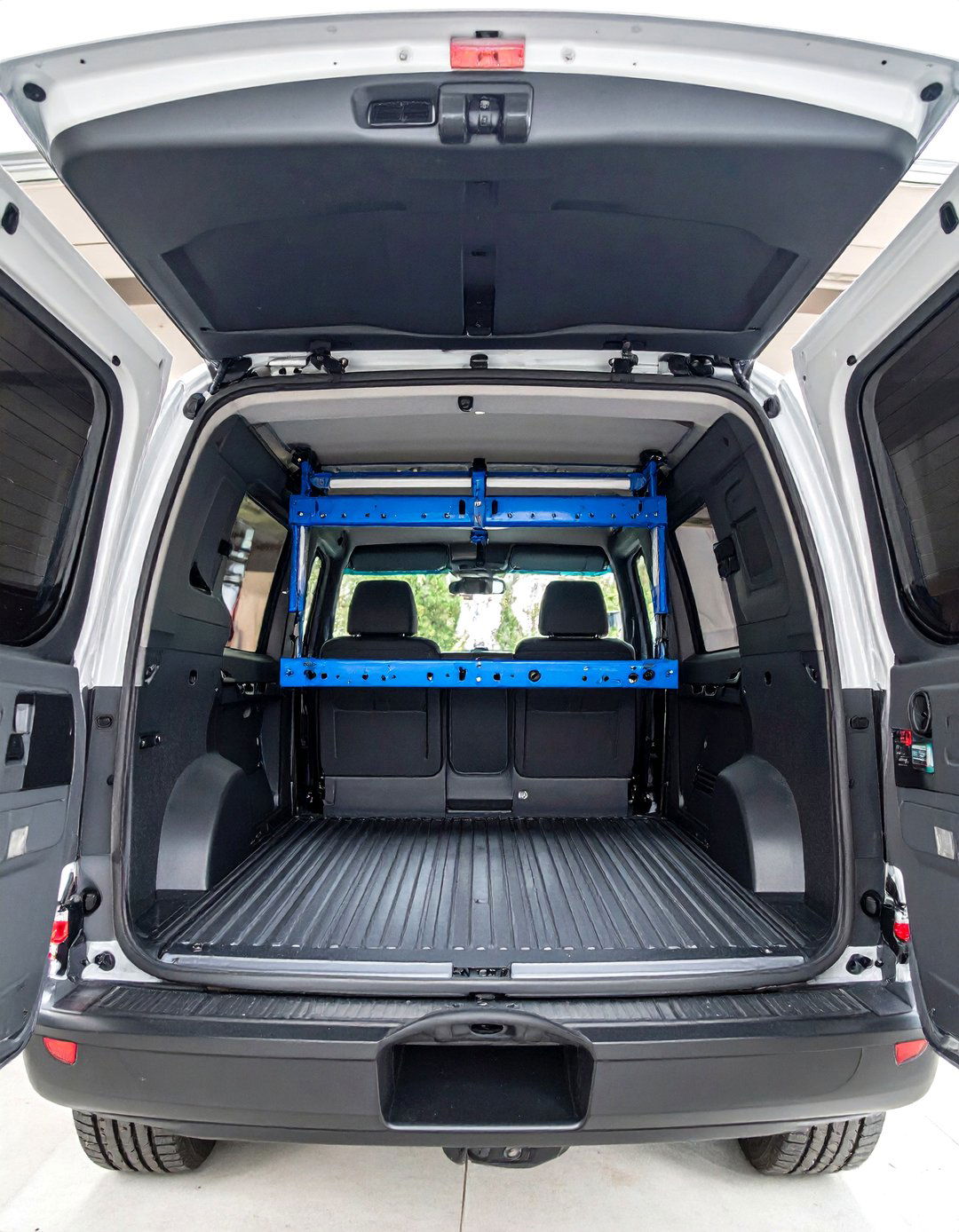
Leave a Reply